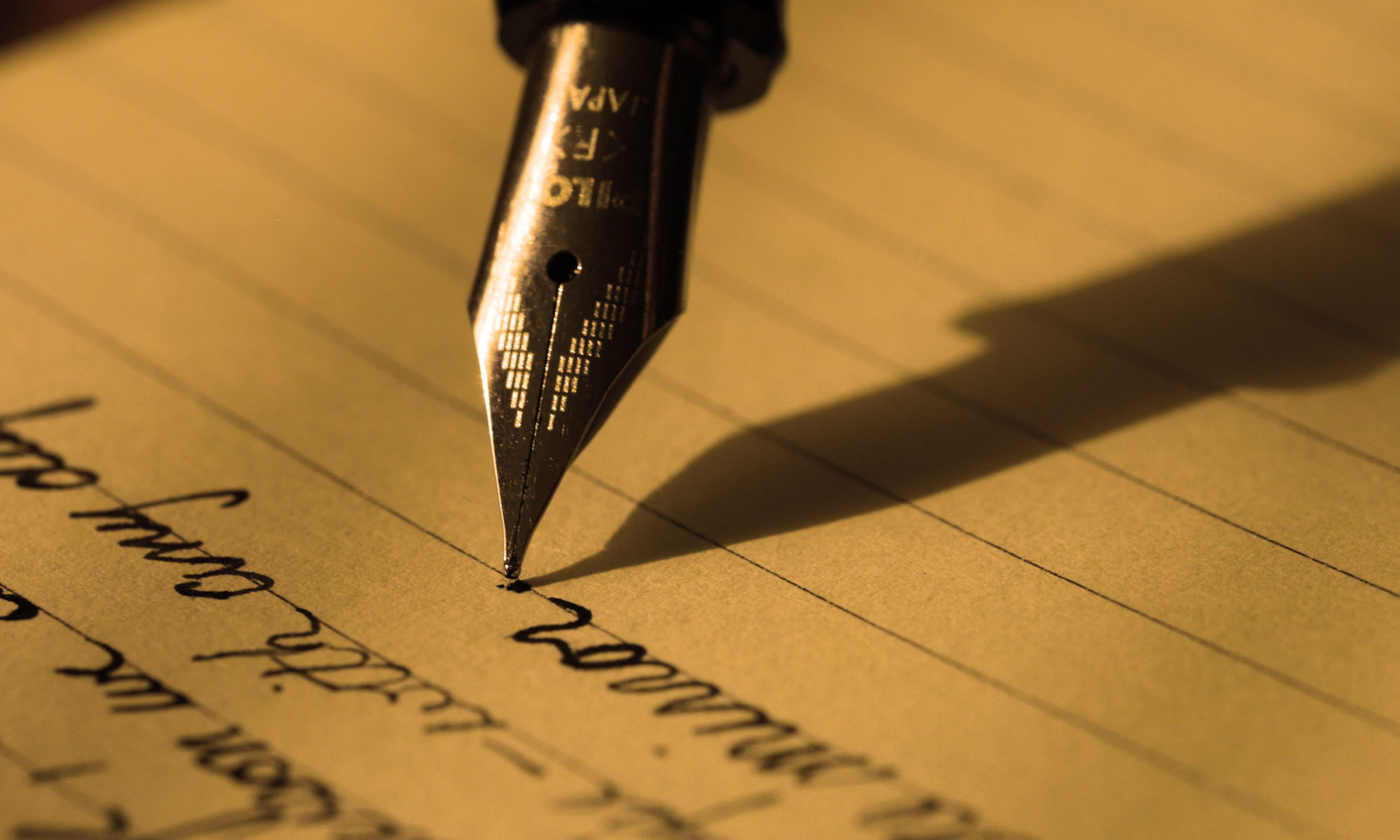PALAZZO BERNARDINI MATERA
Mrs. Anna Rosa BERNARDINI
Address
Via Arco del Sedile, 9
75100 – Matera (MT)
Phone
+39 0835 333366
+ 39 347 320 4507
For information, quotation or booking a suite send an e-mail using the contact form:
The garden
It will be possible for Palazzo Bernardini’s guests to visit its fantastic garden overlooking the Sassi of Matera (stones of Matera).
From the garden you can admire the rock-church of Madonna de Idris , San Pietro Caveoso and the beauties that surround it.

You can also watch the flight of the falcons “grillaio” that have nested on the roofs of the historical residence (EU LIFE project).
The Sassi of Matera are one of the most beautiful places in the world, becoming a UNESCO site in 1993 and for having enchanted famous directors.
The first was Pasolini, with the film “The Gospel According to Matthew.” The second was Mel Gibson, who wanted him as a location for “The Passion of the Christ.”

On October 7, 2017 at Palazzo Bernardini (historically known as Palazzo Ferraù or Giudicepietro) the FAI delegation (Fondo Ambiente Italiano) presented the extraordinary openings relating to Matera and Basilicata region on the occasion of the Fallen Day scheduled for Sunday, October 15, 2017, including the visit to the garden of Palazzo Bernardini.
Thematic itineraries have linked, like a common thread to be followed freely, the opening of gardens, parks, palaces, churches, artisan shops, archives, but also entire neighborhoods and hamlets.


Joseph-Napoléon Bonaparte Hall
Continental breakfast will be served inside the Historical Hall Joseph-Napoléon Bonaparte (King of Naples and Sicily and elder brother of Napoleon Bonaparte) or in another Hall where guests will have the opportunity to admire the magnificent frescoes and decorations of Palazzo Bernardini.
The Joseph-Napoléon Bonaparte Hall (or Party Hall) has a barrel vault and includes 12 canvas’ paintings. There are four mirrors that dominate as many consoles with marble shelves and white lacquered with gold-coloured ornaments. In the middle of the Hall there is an original Murano chandelier.
White and gold characterize all the decorative elements of the historical Hall, the doors, the shutters, the frames of the mirrors and the paintings and those of the upholstery. The armchairs and sofas are part of the original decors and retain the original yellow damask covering fabric.



Angel Suite
The suite overlooks the Arch of Piazza del Sedile, has 2 beds (one double bed and one single bed) and takes its name from the frescoes of the angels that decorate its walls.
It is located on the 1st floor in the oldest part of the Palace which dates back to 1448.
The suite has a surface of 73 m2 and it is composed of two large communicating rooms (a room of 33 m2 and a living room of 40 m2) that retain the original frescoes (coats of arms of the Matera families that met a long time ago in this hall).
The suite is completed by another small room with a sofa bed, a bathroom (5 m2) with a shower and a large balcony from which you can see the Arch of Piazza del Sedile.
The furniture is decorated with the colors of the original frescoes and there is a small epoch library.
The suite is fully equipped: flat screen TV, free wifi, safe lock box and mini bar.
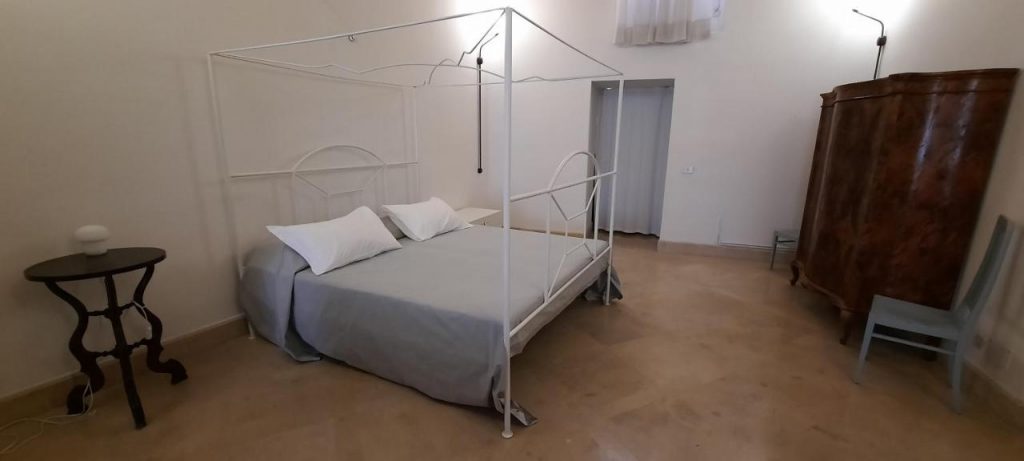
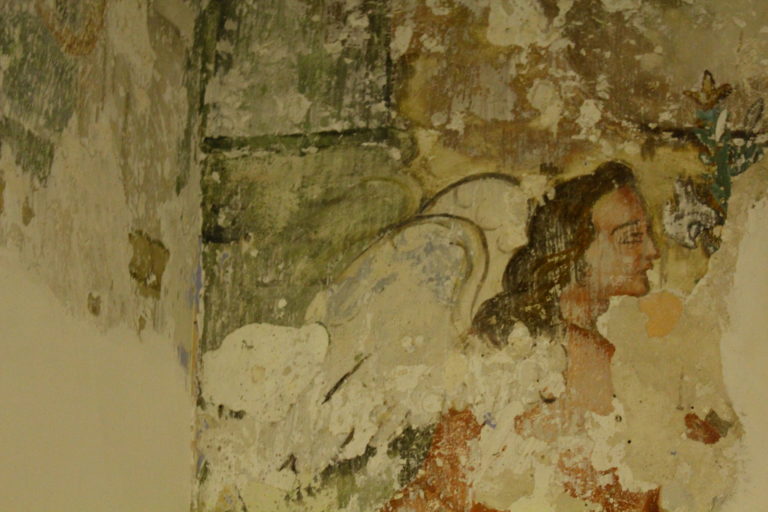

Idris Suite
The Idris suite has a breathtaking view of the Sassi of Matera, is located on the 2nd floor of the Palace and overlooks the magnificent garden of Palazzo Bernardini.
From its balcony you can admire the Rock of the Idris, Saint Peter Caveoso, the beauties that surround it and the flight of the hawks grills that have nested on the roofs of the building.
The suite has two interconnecting rooms furnished in the manner of that time and preserves the original frescoes
The suite has a surface of 34 m2, has 2 beds (one double bed + one single bed) and is fully equipped with air conditioning, flat screen TV, mini bar and a magnificent frescoed bathroom (12 m2) with shower and Jacuzzi.

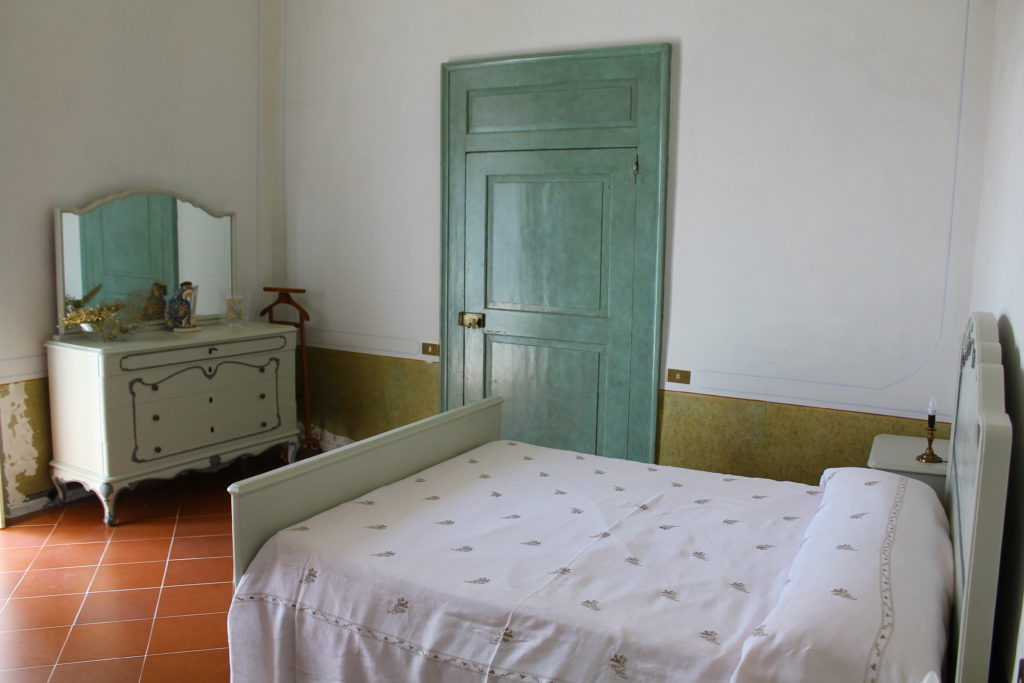

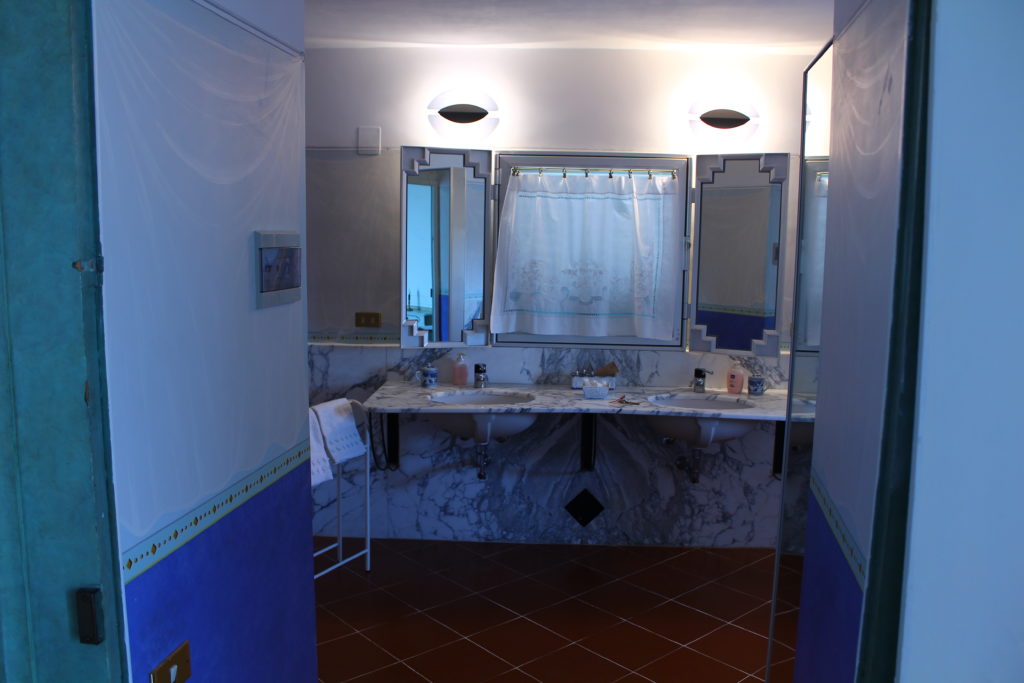



Firraù Suite
The Firraù suite, which can be accessed from the Palazzo Bernardini library’s hall is located on the 2nd floor of the historical palace and overlooks the Arch of Piazza del Sedile.
The suite has a surface of 40 m2, a king size bed for 2 persons and preserves most of the original historical frescoes.
It has a large double bathroom of 9.10 m2 with a shower. It is decorated with antique furniture that recalls the colors of the original frescoes.
The room has a large balcony from which you can admire the Tramontano Castle, a glimpse of the stones and the beauties that surround them.
The suite is fully equipped with every comfort: air conditioning, flat screen TV, mini bar, free wifi, safe deposit box.


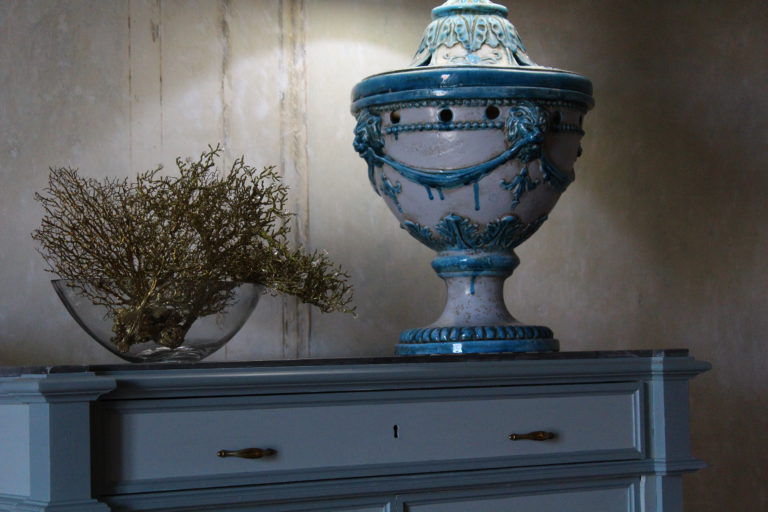
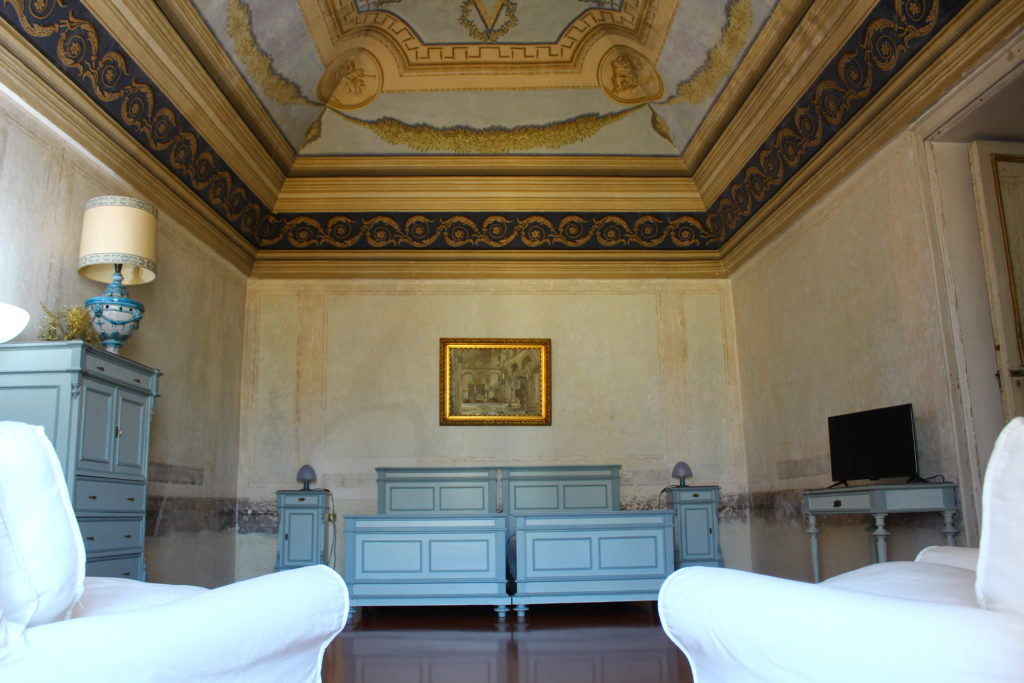
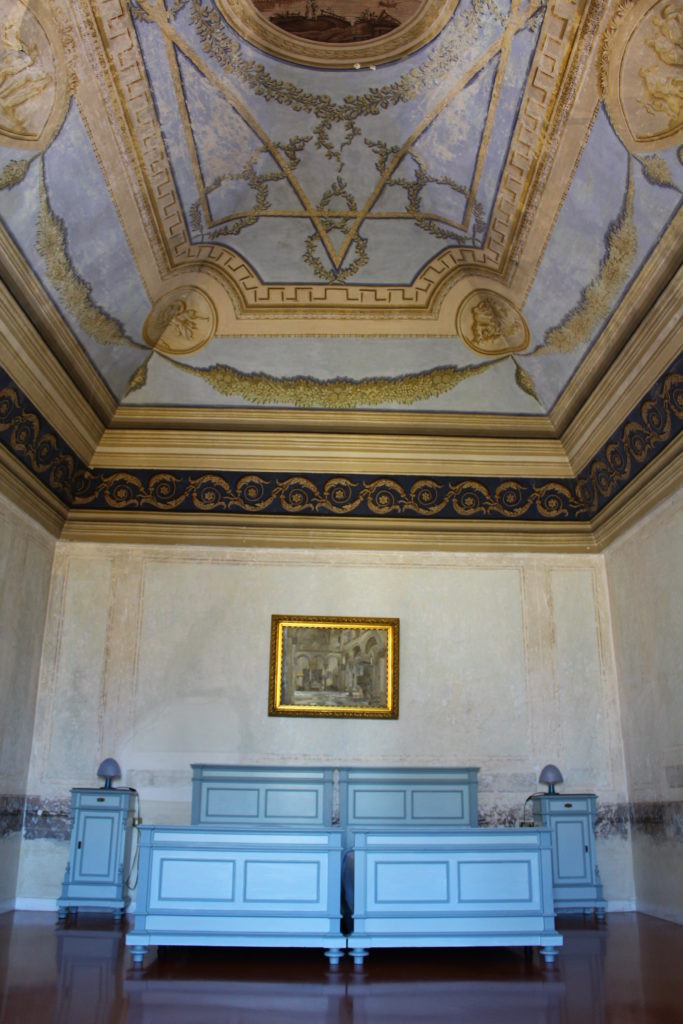
Bed & Breakfast
The Bed & Breakfast was inaugurated in September 2018 by Mrs Anna Rosa Bernardini who decided to open to the public three fantastic suites of her historical Palace to celebrate Matera European Capital of Culture in 2019.
Palazzo Bernardini Bed & Breakfast is located in the Sassi of Matera, in the historic center and overlooks Piazza del Sedile which acts as a link between the two Sassi di Matera: Caveoso and Barisano.
The historic house is a few hundred meters from the Cathedral of Matera, the church of San Francesco d’Assisi, the Music Conservatory, the MOMA Museum and the city center.
Palazzo Bernardini is a historic residence of a patrician family (named Ferraù, Firraù or Firrao), which still preserves a significant part of the original furnishings and decorative elements dated between the end of the 18th century and 1802, while the oldest part of the building dates back to 1448.
Mrs. Anna Rosa wanted to give their guests the opportunity to experience a stay in Matera in her Palace to taste a family atmosphere, the colors and the flavours of a historic house.

Firraù Suite
Useful information:
Check-in from 12 to 18. Check-out by 10 am.
It is possible to leave the luggage in storage.
The nearest parking is in Via Pasquale Vena.
It is possible, on request, to organize shuttles to and from Bari airport and train station or other destinations.
Rates: € 200.00 (1 or 2 people) – € 250.00 (3 people with 1 extra bed)


Suite degli Angeli (Angel Suite)




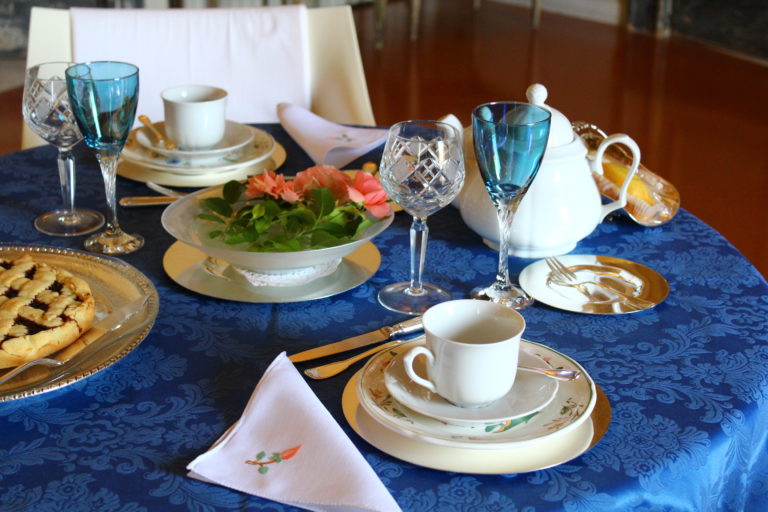


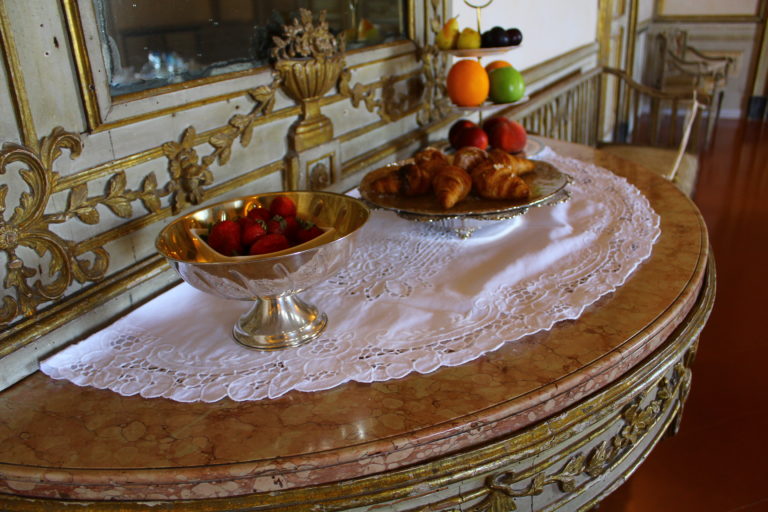
Events and receptions
The Palazzo hosts unique and unforgettable events that Mrs. Anna Rosa Bernardini organizes with great care, refinement and simplicity in the elegant frescoed rooms.
For more information and quotations please contact us using the form at http://www.palazzobernardinimatera.it/contatti/;


#weddings
#receptions
#gala dinners
#lunches
#coffee breaks
# conferences
#conventions,
#congress
# meetings
#exhibitions
#concerts and cultural events
#photographic and cinematographic shooting
#cooking courses
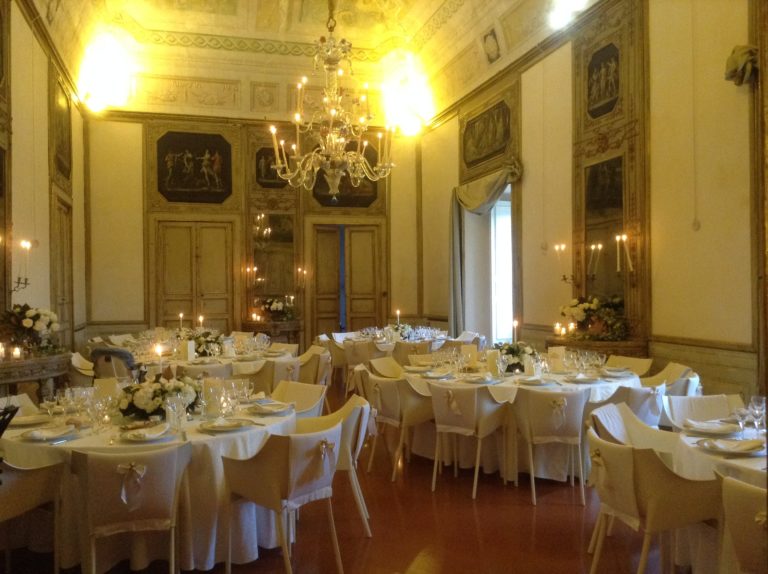




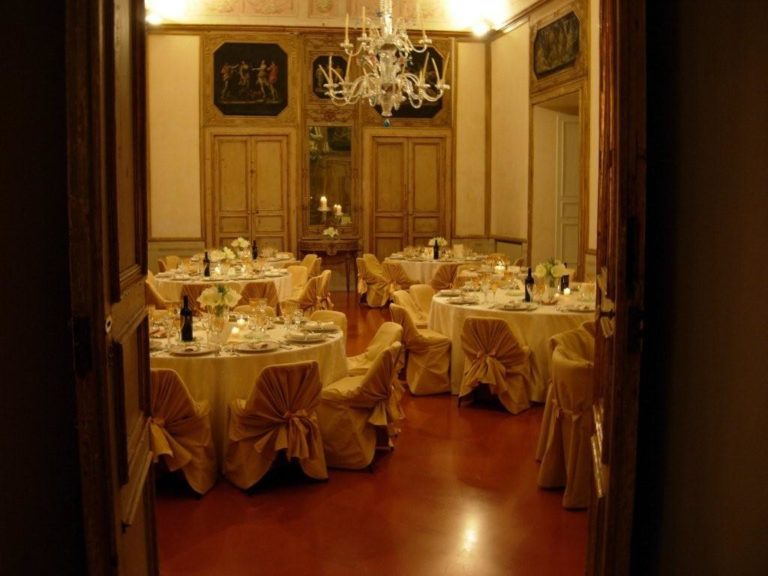

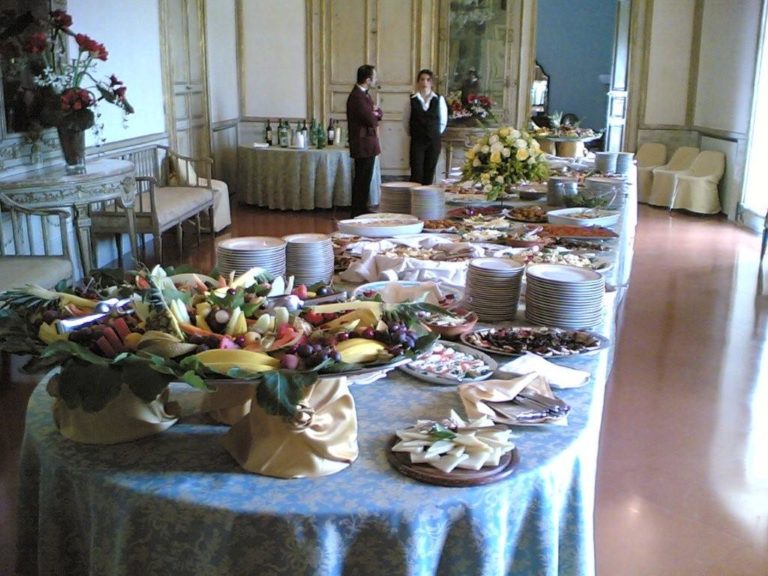






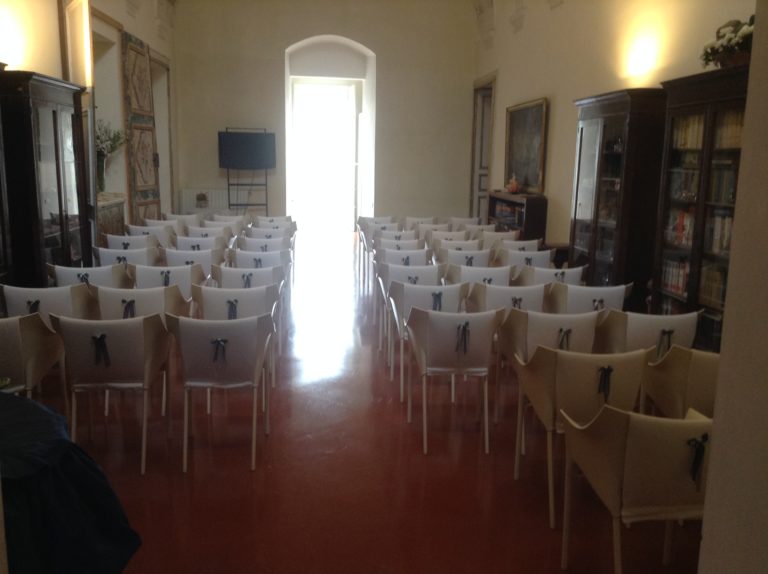

Home
#Palazzo Bernardini #Matera
#Historical house
#Bed & Breakfast
#Weddings
#Receptions
#Events
#Conferences
#Concerts
#Exhibitions
#Photographic and film sets
#Congress
#Cooking courses
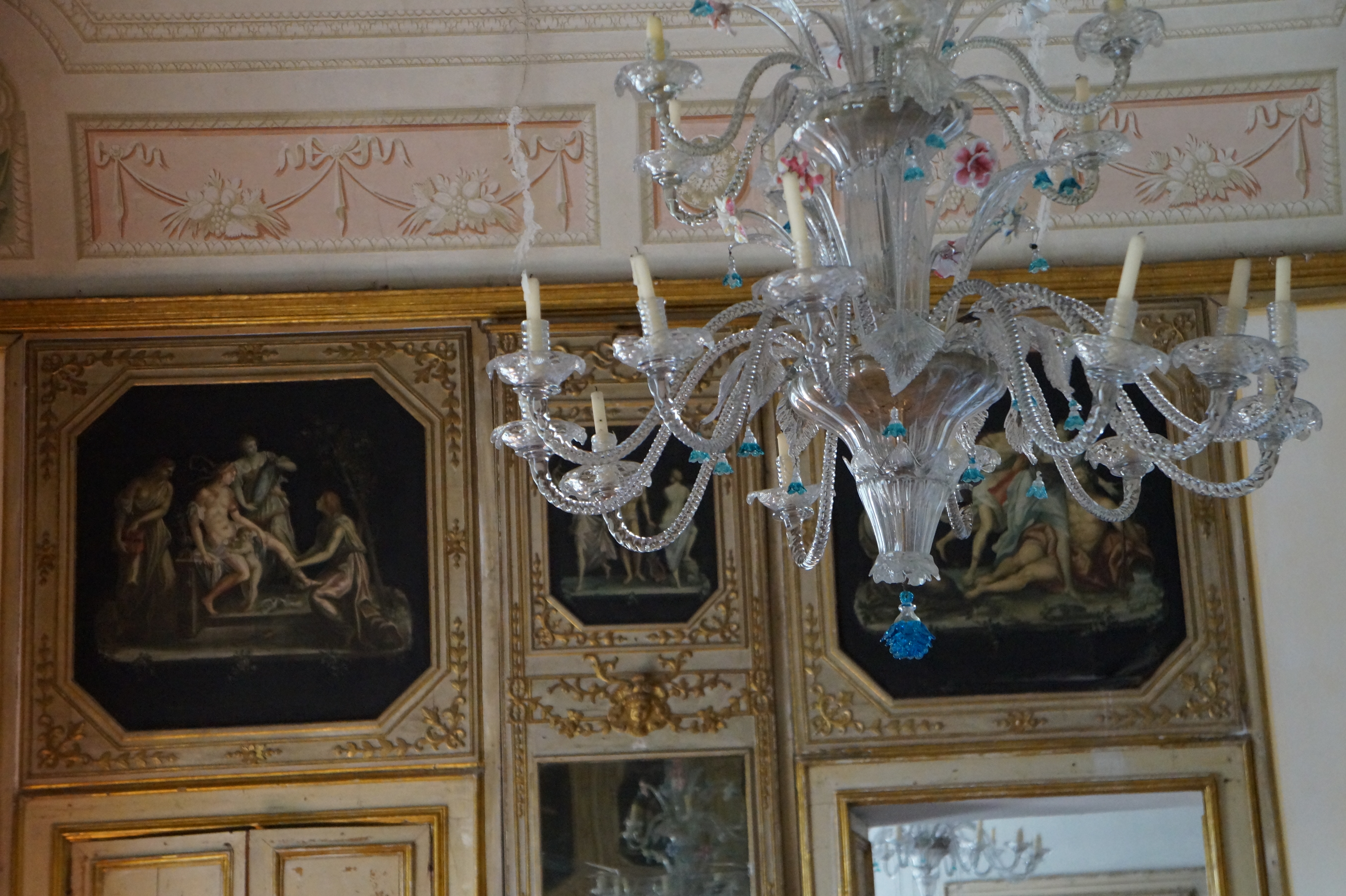

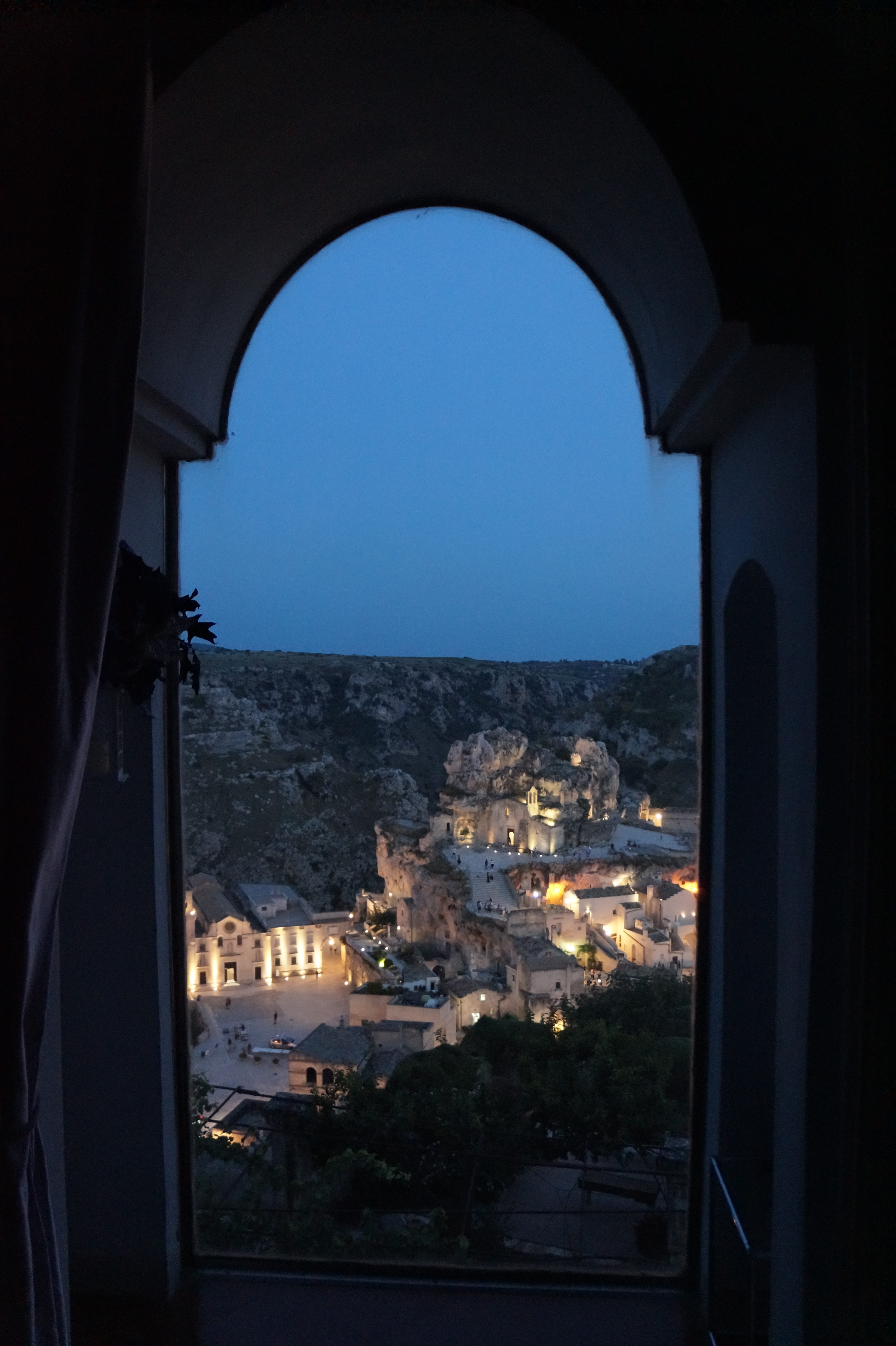

Palace’s history

Palazzo Bernardini (historically known as Ferraù or Giudicepietro) is located in a position where the external fortress of a large castle stood at the end of the first millennium.
To the left of the modern entrance to the “Arco del Sedile”, lies what is left of a part of a fortress from the ancient town of Rocca, where the yound “ Loffredo” were pressed by Boemondo to partake in the first crusades.

In the 1400’s this area was known as Castiglione or Castelvecchio and was ruled by the Ursino del Balzo family.
The external fortress once contained eight defense towers which were de-militarized in 1448 by Count Giovanni Antonio Ursino, who used them in the construction of the Malvezzi, Santoro and Ferrau’ palaces, which contain materials derived from the remains of the towers.

The Ferrau family, an ancient noble family of Matera, divided into different branches and separated. During the middle ages, one branch of the family settled in Calabria, whereas another branch settled in the Altamura area.
In 1732, the palace was inhabited by Don Giuseppe Ferrau, his wife and their eleven children, and governed by the village of Castiglione.
It appears that the current entrance from Piazza Sedile was built in honor of King Joseph-Napoléon Bonaparte’s arrival in Matera on May 30, 1806. who had just obtained reign over the Kingdom of Two Sicilies and was eager to visit several cities in his newly acquired territories. Joseph-Napoléon Bonaparte was King of Naples and Sicily and elder brother of Napoleon Bonaparte.
A triumphant reception from the citizens of Matera awaited his majesty, who was hosted at Palazzo Ferrau’ during his stay in Matera.

The central salon of the Palazzo was elaborately adorned to celebrate the royal occasion with festive white and gold ribbons and precious white and yellow fabrics covered the walls. The décor was styled in mythological scenes.
A grand ball was held in this salon and was attended by the residing Royal Court as well as the most prominent families in the kingdom. Notwithstanding such an extravagant royal welcome, King Bonaparte was extremely unkind to the city and just a few months later, transferred the Royal Court from Matera to Potenza.

The Ferrau’ family continued to reside in the Palazzo until the 1800’s, when several members of the family settled in Altamura, under the Republic of Naples. Upon the arrival of Cardinal Ruffo, young Giovanni Firrao was known as a republican and was executed by the cardinal in the presence of his father.
The Matera branch of the family had always been involved with the administrative matters and many of them extended to several other areas of business. Among many, noteworthy are the contributions of Giambattista, a well educated man whose contribution to humanity was made in his research and public duty.

His younger brother Cesare, pursued studies in Naples and later became a well respected military genius responsible for significant military engineering. Cesare’s name is synonymous with the construction of railroads in Italy, as he was responsible for establishing the very first Italian railroad: the Naples-Caserta line.
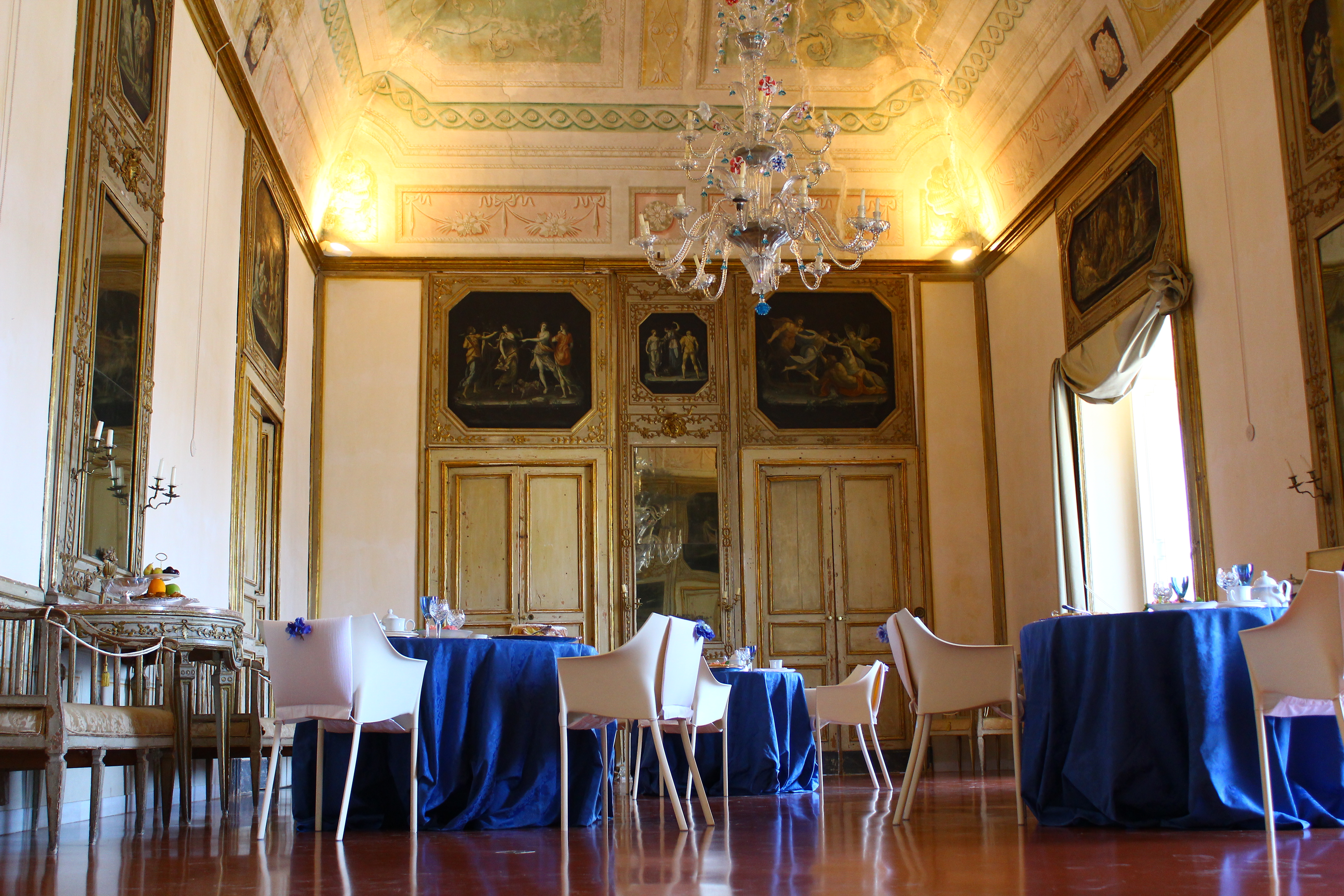
Palazzo Ferrau’ was later inherited by the Giudicepietro family, merchants from Castellaneta who settled in Matera.
In 1973, Prof. Aldo Bernardini purchased Palazzo Ferrau’ from Carlo Giudicepierto. Prof. Bernardini and his wife Anna Rosa, have taken care of restoring and preserving Palazzo Bernardini, as it is now called, to its present state.
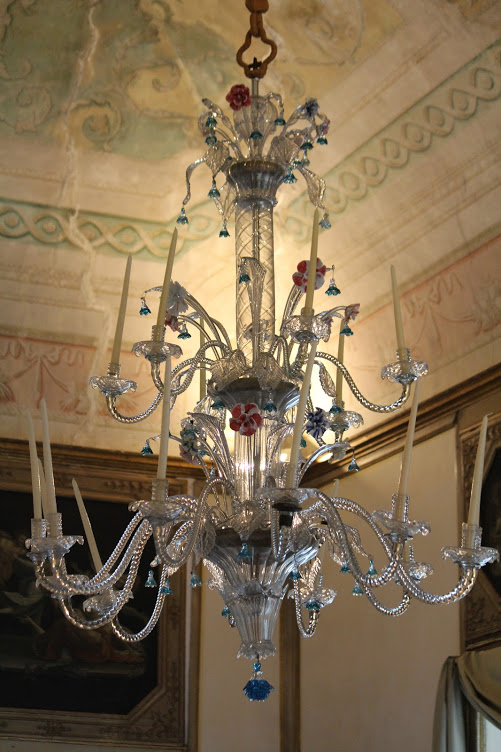
Bibliography
- Mauro Padula, Palazzi antichi di Matera, Altrimedia, Matera-Roma 2002, pp.163-175
- Antonella Miraglia, La galleria di Palazzo Ferraù a Matera, Consiglio regionale della Basilicata, 2004
- Mariagrazia di Pede, I dipinti dei palazzi Ferraù e Malvini Malvezi di Matera e la circolazione di modelli iconografici, in “Leukanikà”, 1-2 (2005),pp. 3

Salone Giuseppe Bonaparte
La colazione continentale sarà servita all’interno del Salone Giuseppe Bonaparte (fratello maggiore di Napoleone Bonaparte che lo nominò Re di Napoli e della Sicilia dal 1806 al 1808) o in un altro salone, dove gli ospiti avranno la possibilità di ammirare i magnifici affreschi e decori.
Il Salone Bonaparte (o Salone delle Feste) ha una volta a botte e comprende 12 dipinti su tela, quattro specchiere che sovrastano altrettante consolle dai ripiani in marmo e laccate in bianco con ornati color oro. Al centro del salone c’è un magnifico lampadario originale di vetro di Murano.
Il bianco e l’oro caratterizzano tutti gli elementi decorativi del salone, le porte, le imposte, le cornici delle specchiere e delle tele e quelle della tappezzeria.
Le poltroncine ed i divani fanno parte degli arredi e conservano l’originaria stoffa di rivestimento in damasco giallo.



Suite degli Angeli
La suite degli Angeli si affaccia sull’Arco di Piazza del Sedile, ha 3 posti letto (2 +1) e prende il nome dagli affreschi degli angeli che la decorano.
E’ ubicata al 1° piano nella parte più antica del Palazzo che risale al 1448. La suite (73 m2) è composta da due grandi ambienti comunicanti, una camera (33 m2) e un soggiorno (40 m2) che conservano gli affreschi originali (stemmi delle famiglie materane che anticamente si riunivano in questo salone).
La suite è completata da un’altra piccola stanza con divano letto , un bagno (5 m2) con doccia e da un ampio balcone dal quale si vede l’Arco del Sedile.
Gli arredi riprendono i colori degli affreschi originali e c’è una piccola biblioteca d’epoca.
La suite è dotata di ogni confort: TV a schermo piatto, wifi gratuito, cassetta di sicurezza, frigo bar …
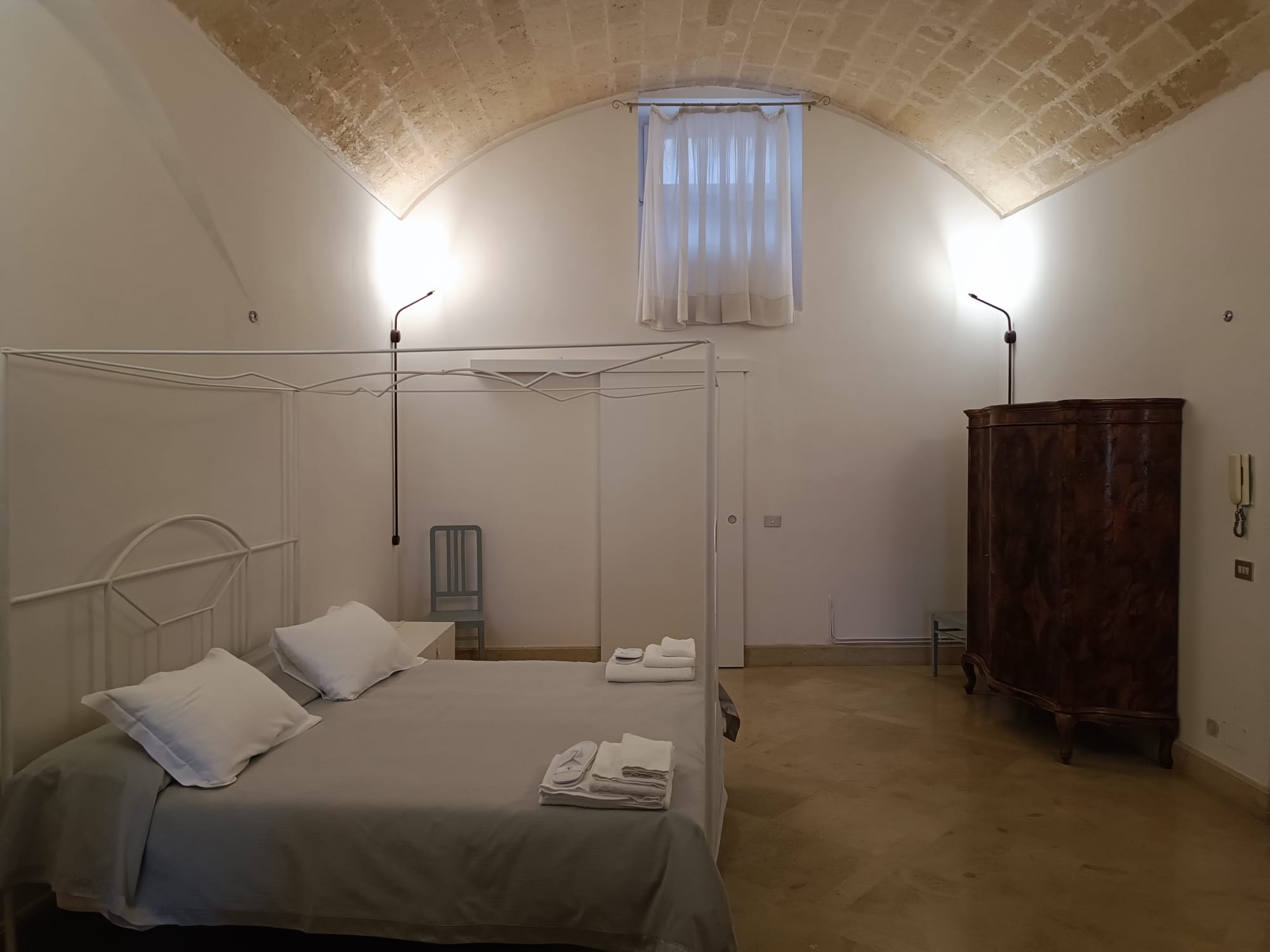


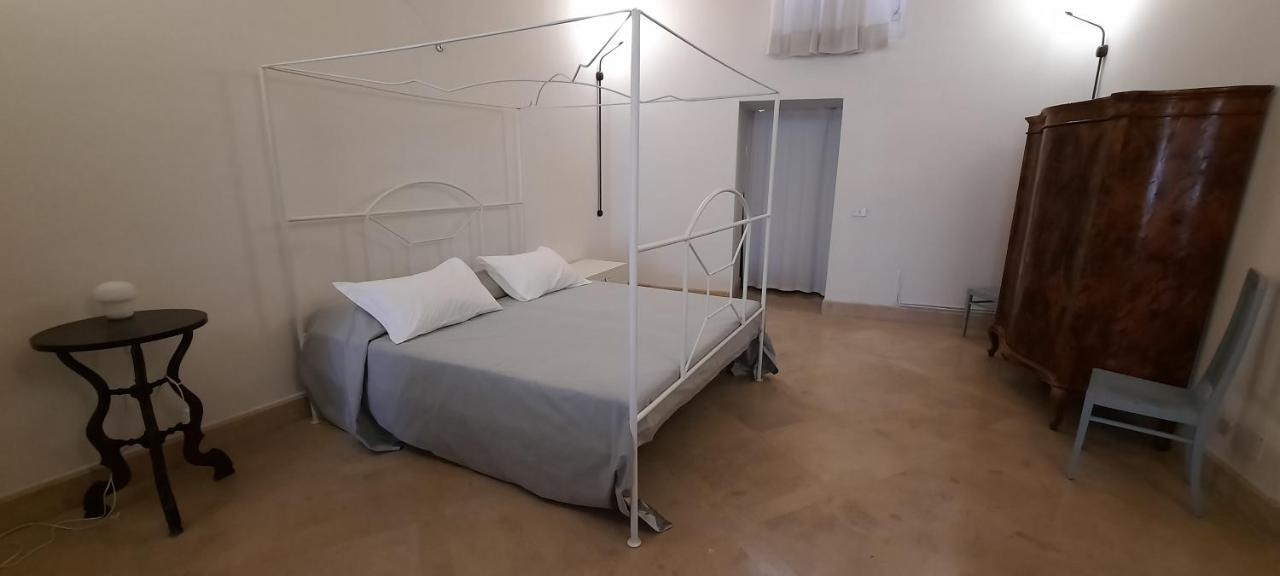
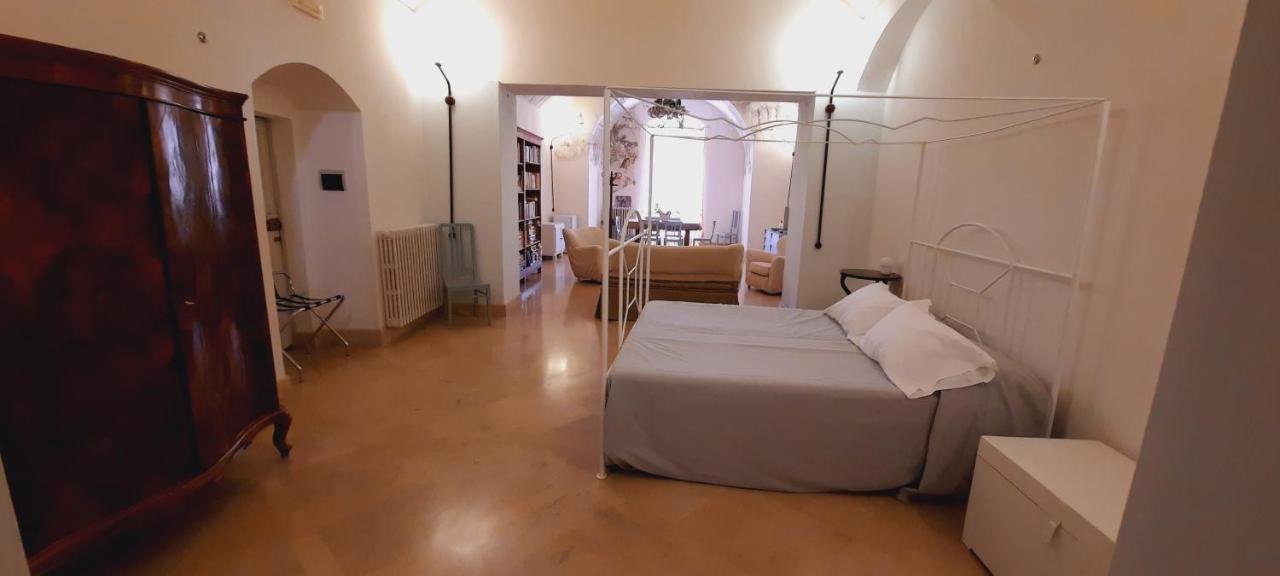
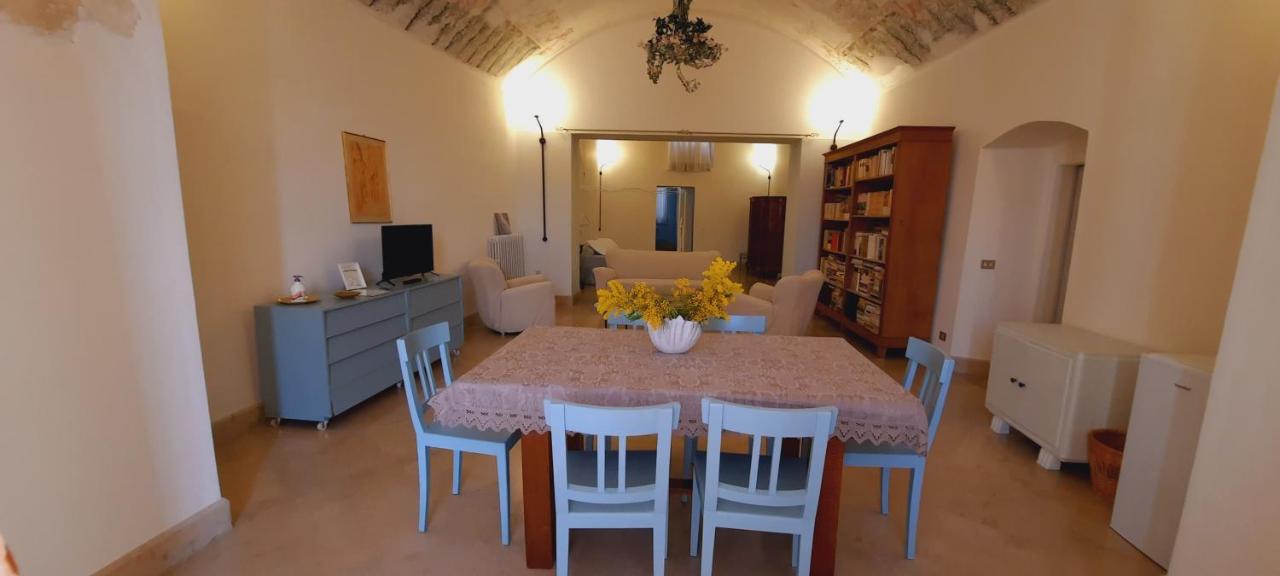
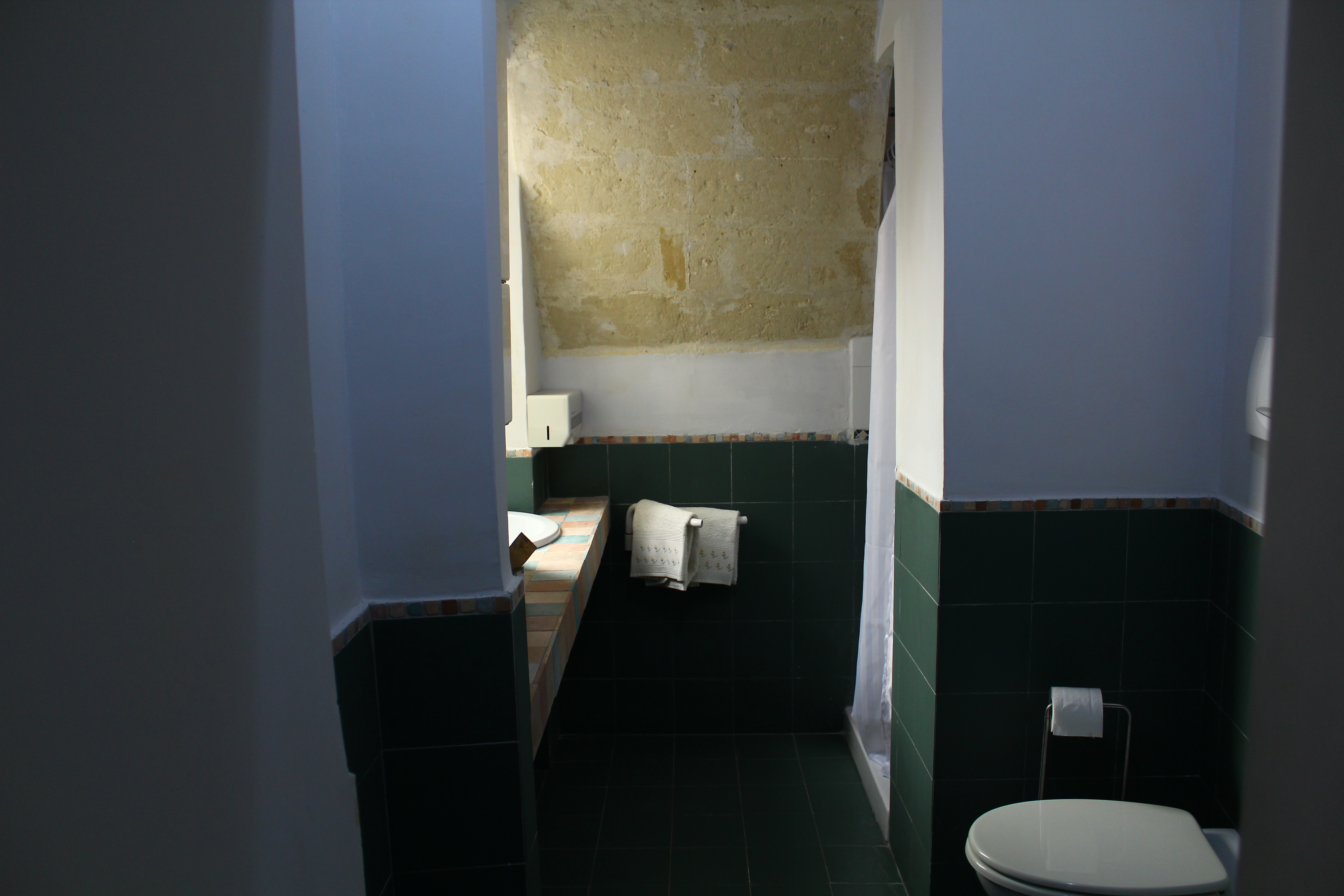
[Best_Wordpress_Gallery id=”12″ gal_title=”Suite degli Angeli”]
Suite Idris
La suite Idris ha una vista mozzafiato sui sassi di Matera, è ubicata al 2 piano e si affaccia sul magnifico giardino di Palazzo Bernardini.
Dal suo balcone potrete ammirare la Rupe dell’Idris, san Pietro Caveoso, le bellezze che la circondano ed il volo dei falchi grillai che hanno nidificato sui tetti del palazzo.
La suite si compone di due stanze comunicanti, arredate con il gusto dell’epoca e che conservano gli affreschi originali.
La suite ha una superficie di 34 m2, ha 3 posti letto (2 + 1 aggiunto) ed è dotata di aria condizionata, TV a schermo piatto, frigo bar e di un magnifico bagno affrescato (12 m2) con doccia e vasca idromassaggio.



[Best_Wordpress_Gallery id=”14″ gal_title=”Suite Idris”]
Suite Ferraù
La suite Ferraù alla quale si accede dal salone biblioteca di Palazzo Bernardini è ubicata al 2° piano e si affaccia sull’Arco di Piazza del Sedile.
La suite ha una superficie di 40 m2, due posti letto e conserva gran parte degli affreschi originali.
Ha un ampio bagno doppio di 9,10 m2 con una doccia. E’ arredata con mobili d’epoca che riprendono i colori degli affreschi originali.
La stanza ha un grande balcone dal quale si può ammirare il Castello Tramontano, uno scorcio dei sassi e le bellezze che li circondano.
La suite è dotata di ogni confort: aria condizionata, TV a schermo piatto, frigo bar, wifi gratuito, cassetta di sicurezza ….



[Best_Wordpress_Gallery id=”8″ gal_title=”Suite Firraù”]
Giardino
Gli ospiti di Palazzo Bernardini potranno visitare il suo fantastico giardino pensile con vista sui sassi di Matera.
Dal giardino potrete ammirare la Rupe dell’Idris, san Pietro Caveoso e le bellezze che la circondano.
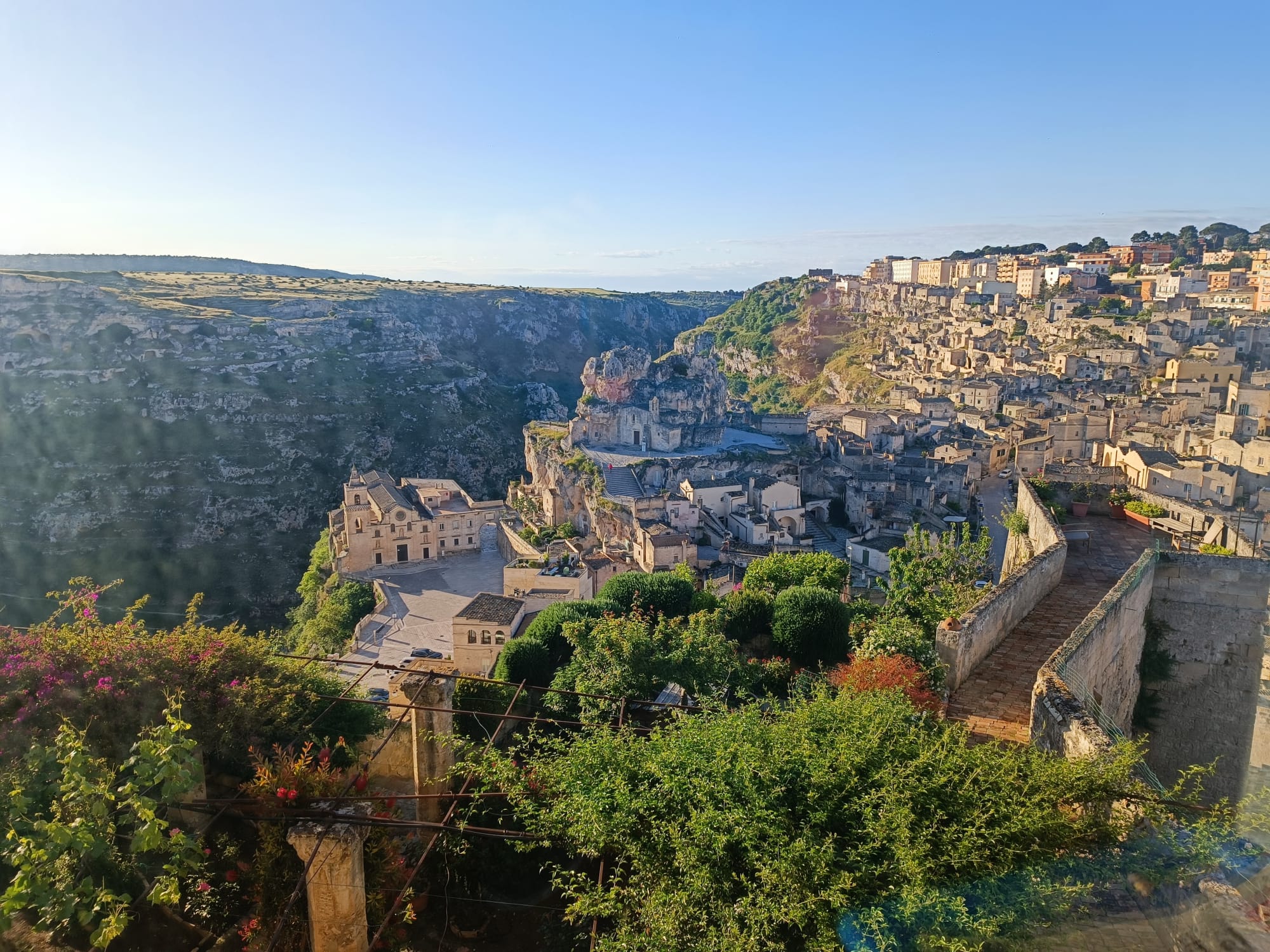




Per chi ama la natura sarà possibile osservare il volo dei falchi grillai che hanno nidificato sui tetti del palazzo (EU LIFE project).
I Sassi di Matera sono uno dei luoghi più belli del mondo, sono diventati un sito UNESCO nel 1993 e hanno incantato registi famosi.
Il primo fu Pasolini, con il film “Il vangelo secondo Matteo”. Il secondo fu Mel Gibson, che lo volle come luogo per girare il suo film “La passione di Cristo”.
6Il 7 ottobre 2017 presso Palazzo Bernardini (storicamente noto come Palazzo Ferraù o Giudicepietro) la delegazione del FAI ha presentato le aperture straordinarie relative a Matera e alla Basilicata in occasione della Giornata Fai D’Autunno prevista per domenica 15 ottobre 2017, tra cui il giardino di Palazzo Bernardini.
Itinerari tematici hanno legato, come un fil rouge da seguire liberamente, l’apertura di giardini, parchi, palazzi, chiese, botteghe artigiane, archivi, ma anche interi quartieri e borghi.



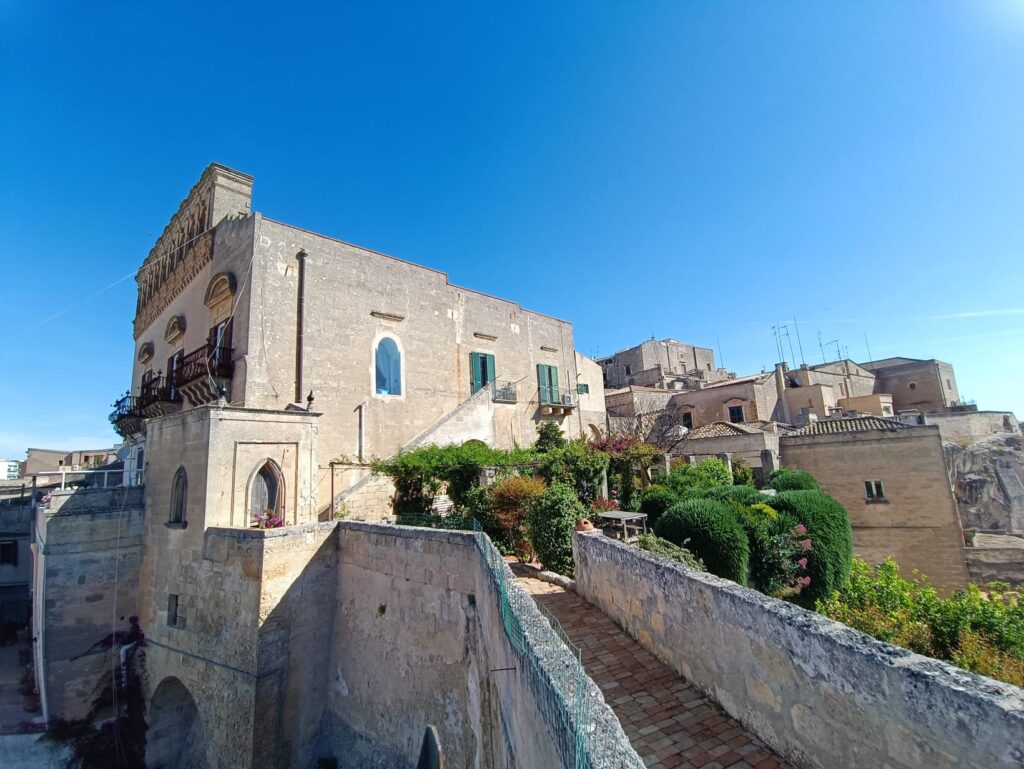
Storia palazzo

Palazzo Bernardini, storicamente noto come Ferraù o Giudicepietro, domina i sassi di Matera e rappresenta uno dei rari esempi in Basilicata di dimora storica di una famiglia patrizia, i Ferraù, che a tutt’oggi conservi una parte significativa degli arredi e degli elementi decorativi originali datati tra la fine del 700 ed il 1802.
Si tratta di un edificio la cui costruzione risale intorno al 1448 e che include una casa privata, attualmente sottoposta a vincolo per il suo valore storico e artistico, composta da 17 stanze in gran parte affrescate e fra le quali si distingue il “salone delle feste o galleria” che è decorato e completo degli arredi originari.
La famiglia Ferraù decide di investire una parte del patrimonio per fare del palazzo materano la rappresentazione alta e fastosa dei nuovi modelli culturali che si affermano verso la fine del 700’, infatti sono evidenti i richiami alla scoperta della pittura romana negli scavi di Pompei e a Parigi che attraverso i grandi cantieri reali di Caserta si diffondono nelle case patrizie della capitale e delle province.
L’ampio salone dalla volta a botte comprende 12 dipinti su tela, quattro specchiere che sovrastano altrettante console dai ripiani in marmo e laccate in bianco con ornati color oro.
Il bianco e l’oro caratterizzano tutti gli elementi decorativi del salone, le porte, le imposte, le cornici delle specchiere e delle tele e quelle della tappezzeria, le poltroncine e i divani che fanno parte degli arredi e che conservano l’originaria stoffa di rivestimento in damasco giallo.
Dominano la scena, cromaticamente, il bianco delle superfici e l’oro degli stucchi, esaltati specialmente dalla luce solare del primo pomeriggio, anche grazie alla presenza degli alti specchi e del grande lampadario a candele in cristallo di Murano.

Dalla finestra della camera da letto è possibile ammirare una vista mozzafiato dei sassi di Matera ed in particolare della rupe dell’Idris e della chiesa di San Pietro Caveoso.
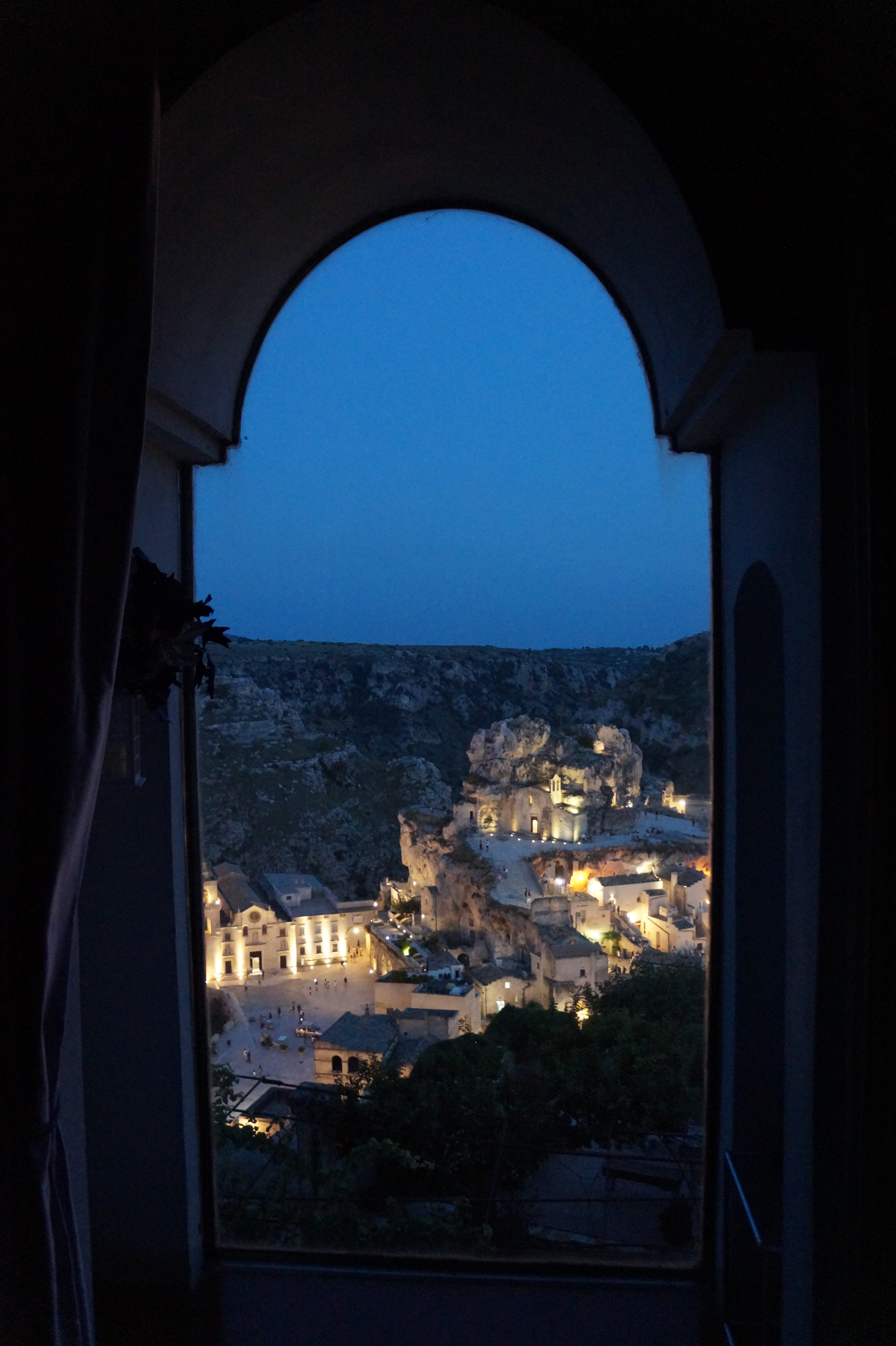
Il Palazzo sorge nel posto dove fin dall’anno Mille vi erano le difese esterne del grande Castello. A sinistra dell’attuale ingresso di Arco del Sedile, è ancora presente una struttura scarpata delle difese dell’antica Rocca, da cui uscirono i giovani Loffredo chiamati da Boemondo per partire per la prima crociata.
Nel 1400 il Castiglione o Castelvecchio, di proprietà degli Ursino del Balzo, dominava la città ed in particolar modo il Sasso Caveoso. Le difese esterne avevano otto torri.
Il Conte Giovanni Antonio Ursino nel 1448 si disfece delle torri che divennero area fabbricabile utilizzata in seguito per la costruzione dei palazzi Malvezzi, Santoro e Fearrau’ che adoperarono i materiali provenienti dall’abbattimento delle opere di difesa.
La famiglia Ferraù, antica famiglia materana, si divise in alcuni rami: un gruppo nel Medioevo si trasferì in Calabria mentre un altro prese dimora ad Altamura.
Sicuramente nel 1732 al Palazzo si accedeva, come è scritto nel Catasto Ostiario, dal Castiglione ed era abitato da don Giuseppe Ferraù, sua moglie e ben undici figli.

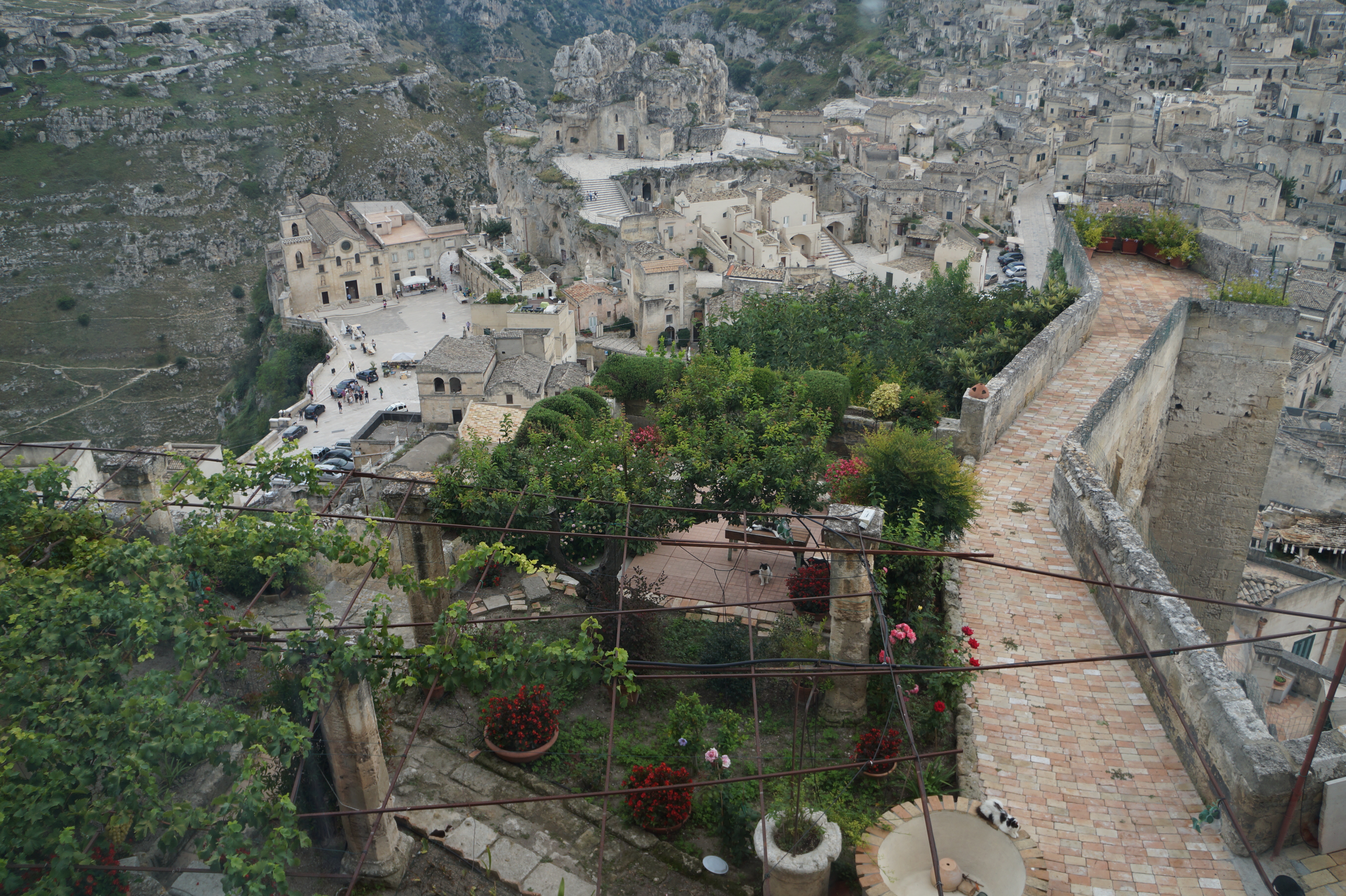
L’attuale ingresso verso Piazza Sedile è stato costruito in occasione della venuta a Matera il 30 Maggio 1806, del Re Giuseppe Buonaparte, fratello di Napoleone, che dopo la sua nomina a Re delle Due Sicilie, volle visitare alcune città del suo regno.

A Matera fu accolto trionfalmente da tutti i cittadini e fu ospitato nel Palazzo Ferraù, il cui salone per celebrare l’occasione fu arricchito con stucchi bianchi e oro e le pareti ricoperte di stoffa bianca e gialla, il tutto arricchito con rappresentazioni di scene mitologiche.
In questo salone fu data una grande festa da ballo cui parteciparono i funzionari della Regia Udienza e tutte le migliori famiglie.
Nonostante questa accoglienza regale Giuseppe Bonaparte trattò malissimo la città perché, per sua decisione, dopo pochi mesi la Regia Udienza fu trasferita da Matera a Potenza e dopo pochi anni Matera fu privata anche del tribunale che fu riproposto nel 1861.

La famiglia Firraù continuò al abitare il palazzo fino a tutto il 1800. Alcuni componenti del ramo trasferitosi ad Altamura aderirono alla repubblica partenopea. Con l’arrivo del Cardinale Ruffo, il giovane Giovanni Firrao fu individuato come repubblicano e fu giustiziato dallo stesso cardinale alla presenza del vecchio padre.
Il ramo materano della famiglia svolse sempre un’attività amministrativa meritoria ed alcuni dei suoi esponenti si sono affermati in diversi campi. Fra i tanti si ricorda Giambattista che fu uomo di lettere e lascio pubblicazioni ed ebbe anche incarichi pubblici. Cesare, il fratello minore, studiò a Napoli e, ufficiale del genio militare, fu autore di opere di ingegneria militare. Il suo nome fu famoso per la costruzione di strade ferrate, in particolare, insieme ad altri, ideò e costruì la prima ferrovia italiana, il tratto Napoli-Caserta.
Il Palazzo Firraù passò di proprietà alla Famiglia Giudicepietro, commercianti venuti a Matera da Castellaneta. Nel 1973, Carlo Giudicepietro ha ceduto il Palazzo al Prof. Aldo Bernardini che insieme alla moglie, Anna Rosa, ne ha curato il restauro e la conservazione.

Bibliografia:
- Mauro Padula, Palazzi antichi di Matera, Altrimedia, Matera-Roma 2002, pp.163-175
- Antonella Miraglia, La galleria di Palazzo Ferraù a Matera, Consiglio regionale della Basilicata, 2004
- Mariagrazia di Pede, I dipinti dei palazzi Ferraù e Malvini Malvezi di Matera e la circolazione di modelli iconografici, in “Leukanikà”, 1-2 (2005),pp. 30-42
Bed & Breakfast
Palazzo Bernardini Bed & Breakfast
Il Bed & Breakfast è stato inaugurato nel Settembre del 2018 dalla signora Anna Rosa che ha deciso di aprire al pubblico tre fantastiche suite della sua dimora storica per celebrare Matera Capitale Europea della Cultura nel 2019.
Palazzo Bernardini Bed & Breakfast è ubicato nei Sassi di Matera, in pieno centro storico e si affaccia su Piazza del Sedile che fa da cerniera fra i due Sassi di Matera: Caveoso e Barisano.
La dimora storica è a poche centinaia di metri dalla Cattedrale di Matera, dalla chiesa di San Francesco d’Assisi, dal Conservatorio dal Museo MOMA e dal centro cittadino.
Palazzo Bernardini si trova all’interno di una dimora storica di una famiglia patrizia (i Ferraù, Firraù o Firrao) che a tutt’oggi conserva una parte significativa degli arredi e degli elementi decorativi originali datati tra la fine del ‘700 ed il 1802, mentre la parte più antica del palazzo risale al 1448.
La signora Anna Rosa ha voluto dare la possibilità ai propri graditi ospiti di vivere un soggiorno a Matera nel suo Palazzo per assaporare un’atmosfera familiare, i colori ed i sapori di una casa di altri tempi.

Suite Firraù
Informazioni utili:
Il check-in può essere fatto dalle ore 12 alle 18. Le stanze devono essere liberate entro le ore 10. E’ possibile lasciare in deposito i bagagli.
Il parcheggio più vicino è in Via Pasquale Vena.
E’ possibile, su richiesta, organizzare navette da e per aeroporto e stazione ferroviaria di Bari o altre destinazioni.
Tariffe:
200,00 € (1 o 2 persone)
250,00 € (3 persone con 1 letto aggiuntivo)
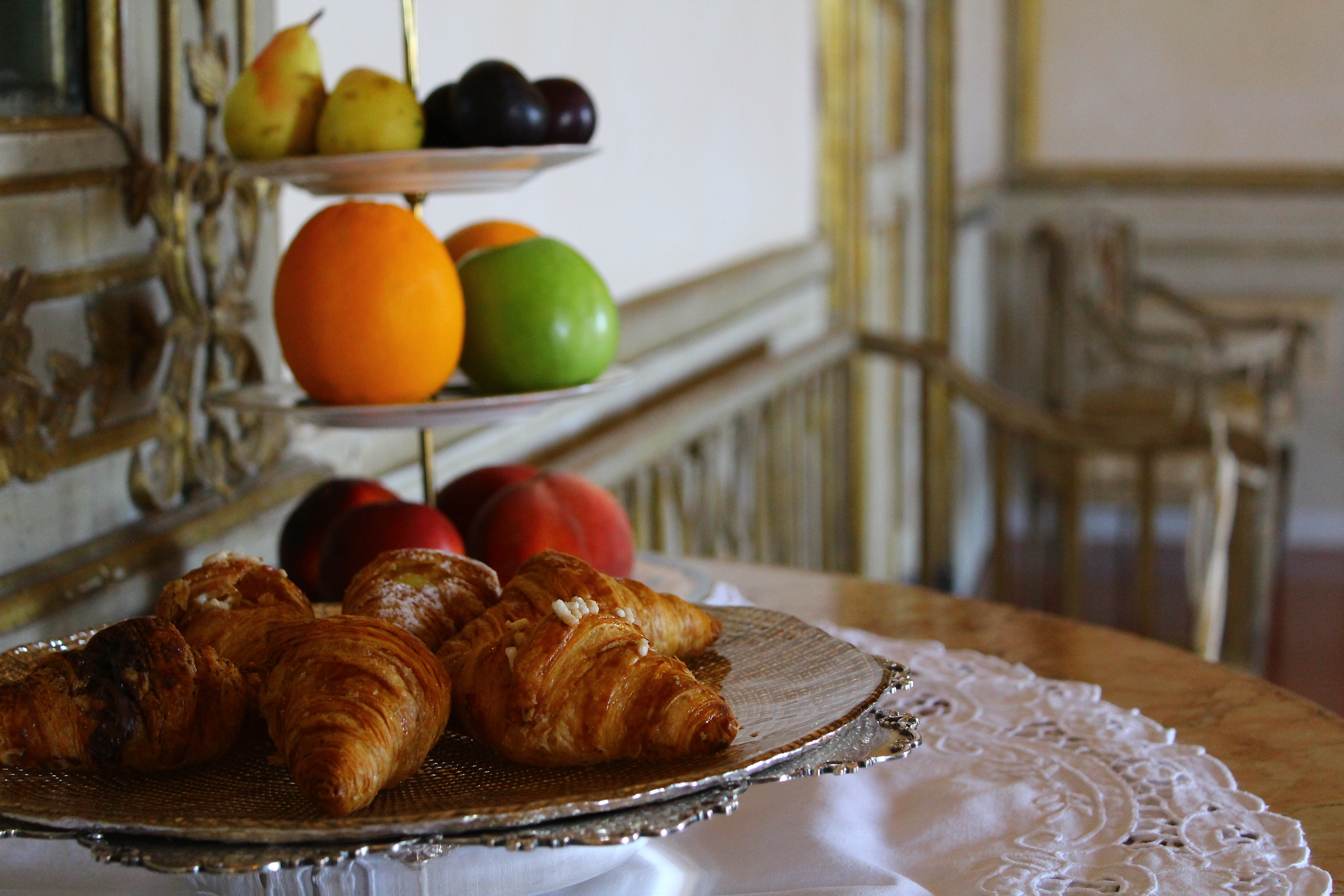
 Suite degli Angeli
Suite degli Angeli









Eventi e ricevimenti
Palazzo Bernardini eventi e ricevimenti
Il Palazzo ospita eventi unici e indimenticabili che la signora Anna Rosa, organizza con grande cura, raffinatezza e semplicità negli eleganti saloni affrescati.
Per maggiori informazioni e per preventivi contattare Anna Rosa Bernardini: tramite il modulo alla pagina http://www.palazzobernardinimatera.it/contatti/
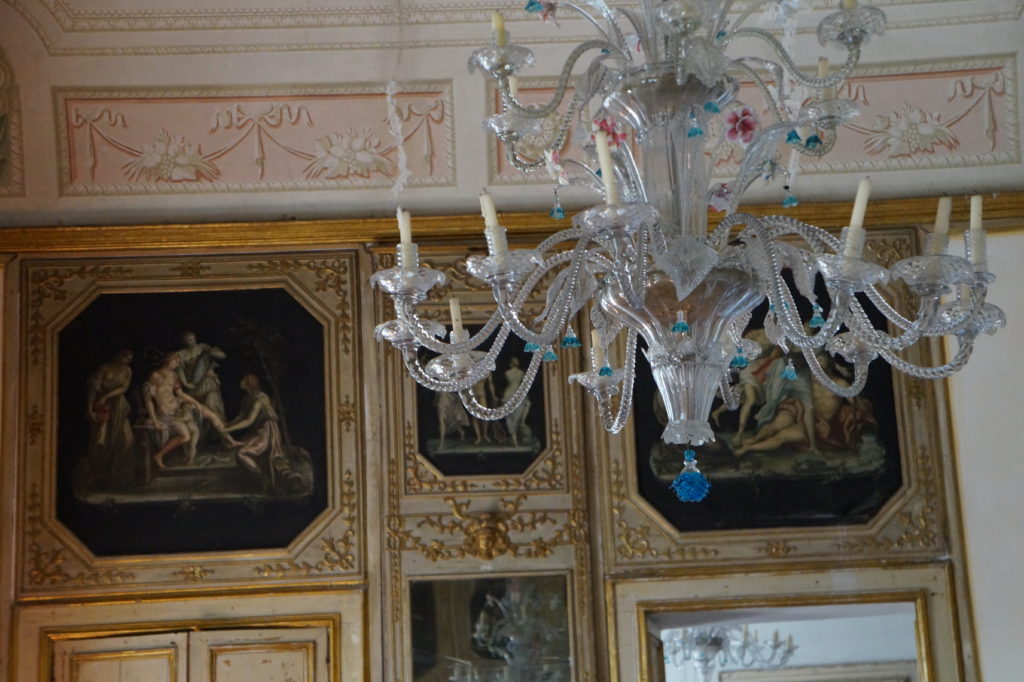



Eventi
matrimoni, ricevimenti, cene di gala, lunch, coffee break
conferenze, convegni, riunioni (anche a supporto del vicino Auditorium del Conservatorio che ha 400 posti a sedere)
mostre
concerti ed eventi culturali
riprese fotografiche e cinematografiche
corsi di cucina









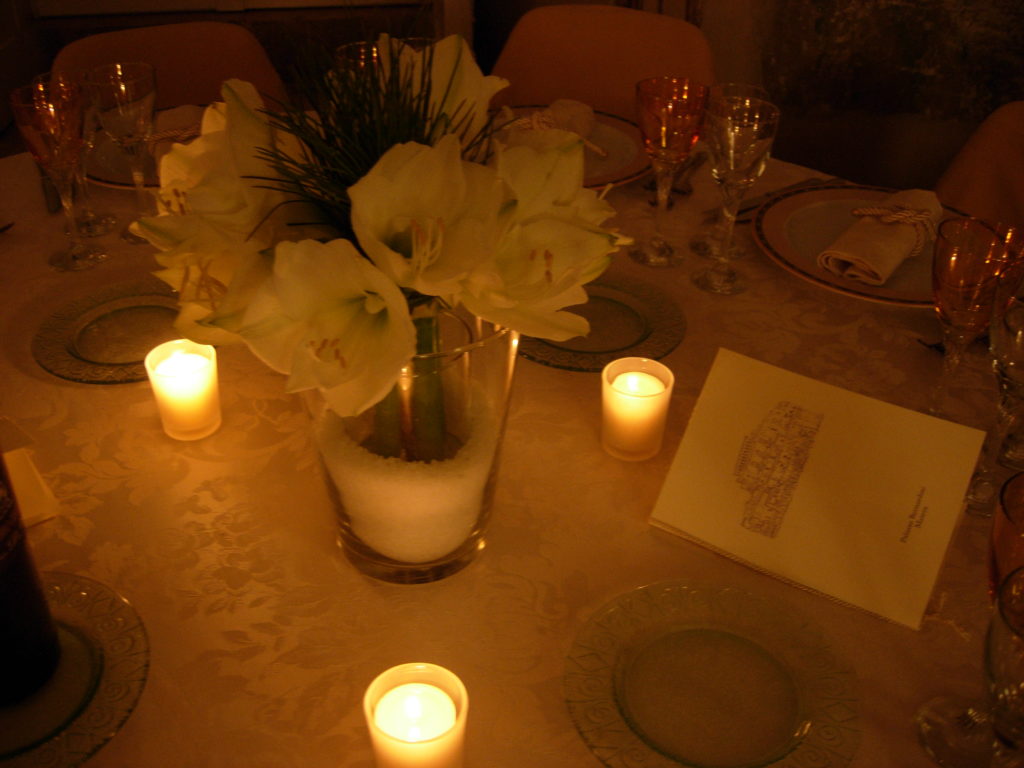

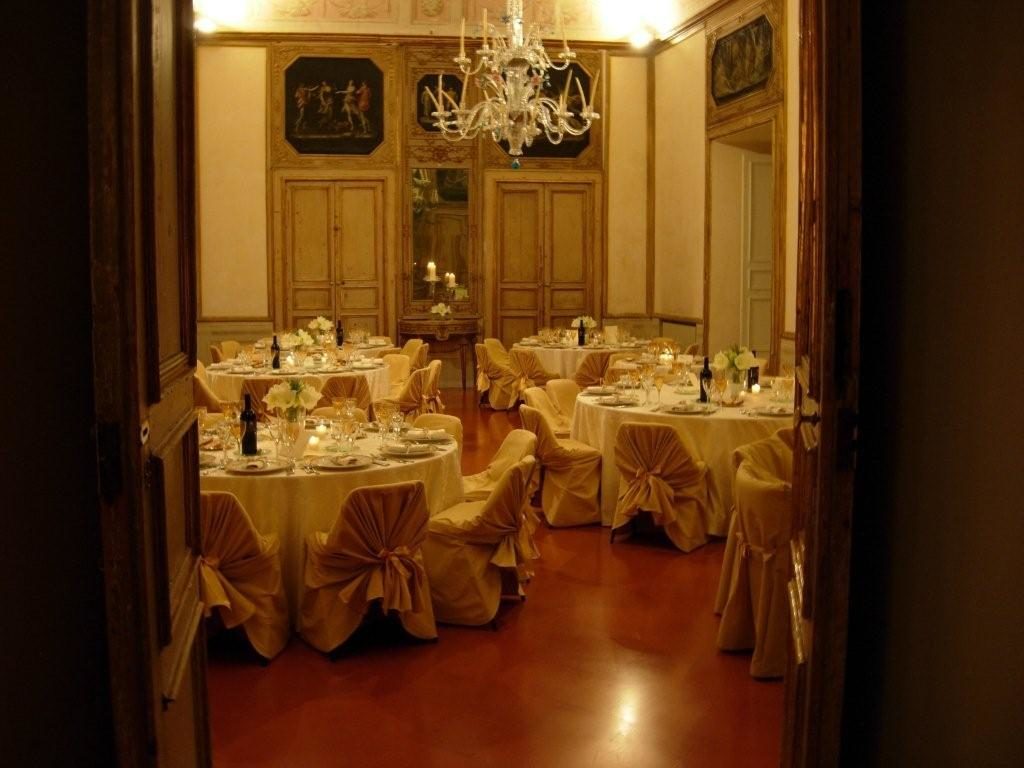

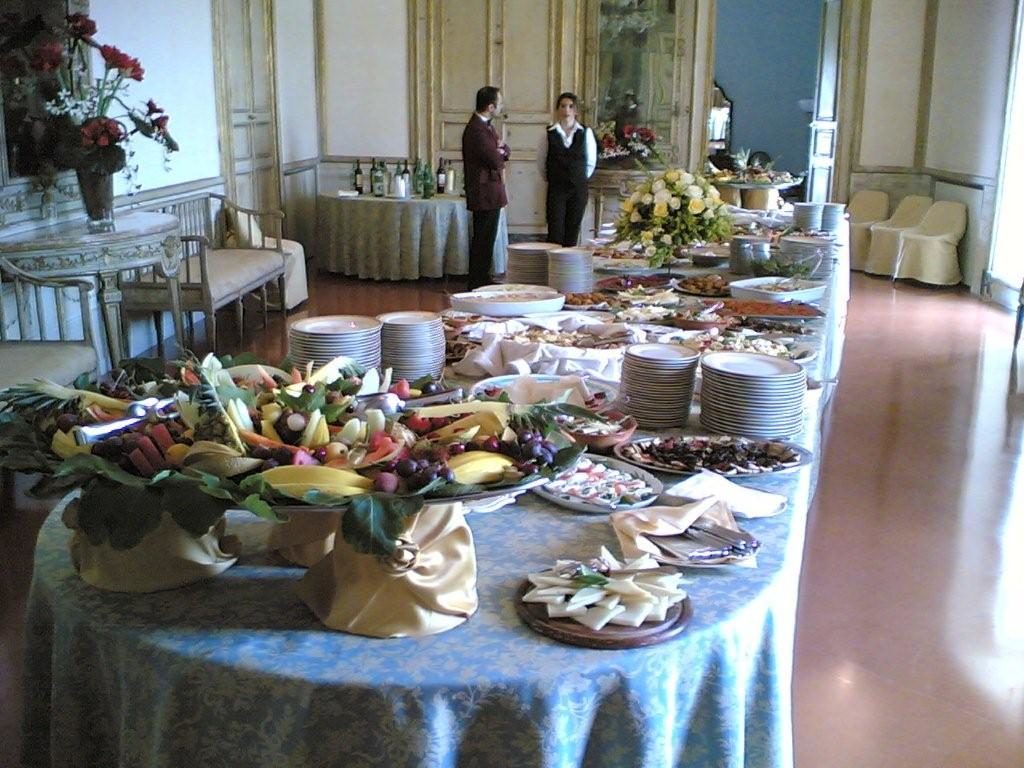



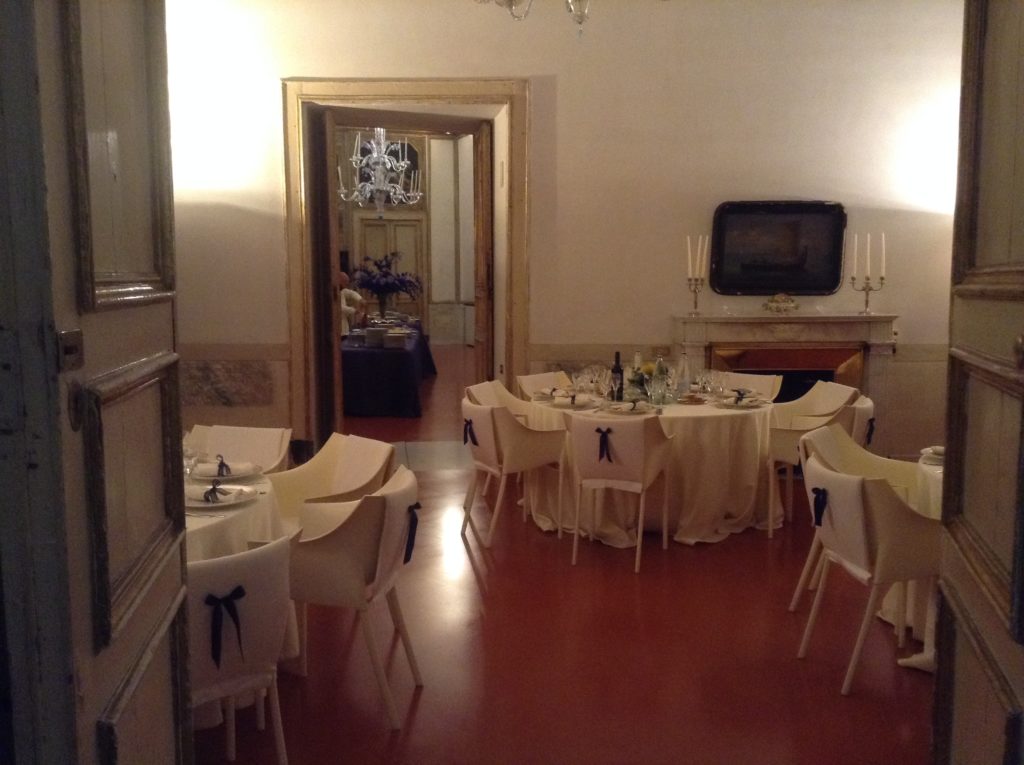



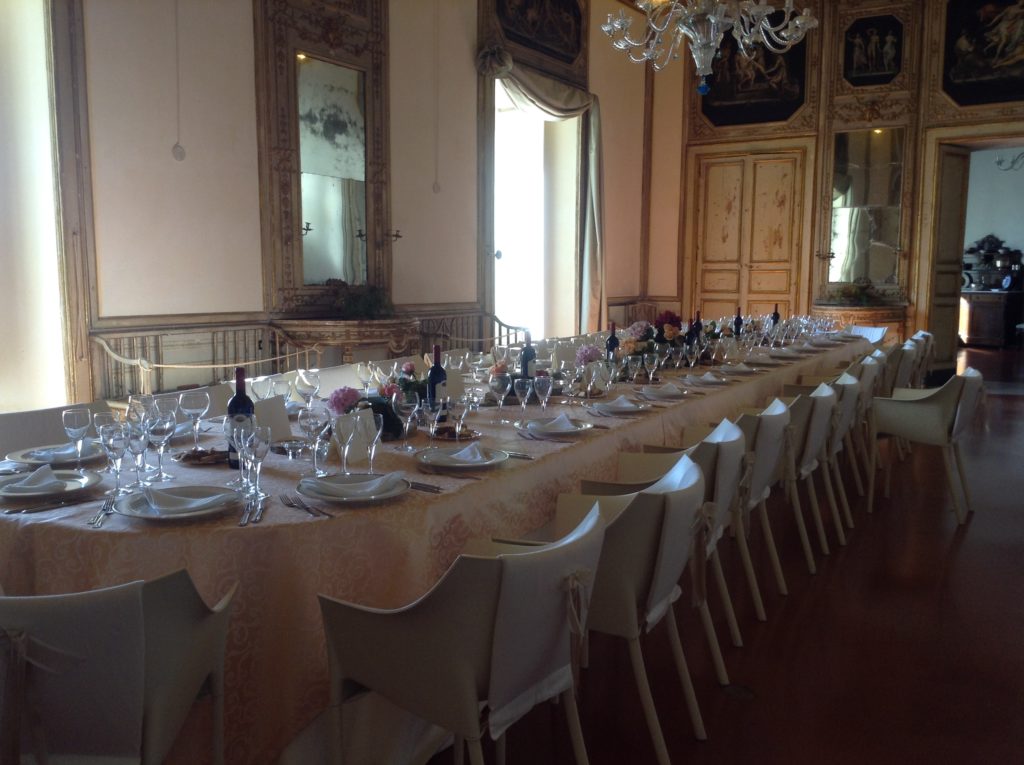
Private: WPForms Preview
This is the WPForms preview page. All your form previews will be handled on this page.
The page is set to private, so it is not publicly accessible. Please do not delete this page 🙂 .
Home
#Palazzo Bernardini #Matera
#Dimora storica
#Bed & Breakfast
#Matrimoni
#Ricevimenti
#Eventi
#Conferenze
#Concerti
#Mostre
#Set fotografici e cinematografici
#Congressi
#Corsi di cucina







Chi siamo
Palazzo Bernardini (storicamente noto come Ferraù o Giudicepietro) è una dimora storica che la famiglia Bernardini ha acquistato nel 1973.
La signora Anna Rosa ne ha curato personalmente il restauro, la conservazione e la valorizzazione.
Palazzo Bernardini ospita da oltre 20 anni nei suoi saloni affrescati eventi organizzati con grande cura, raffinatezza e semplicità.
Il Bed & Breakfast è stato inaugurato nel Settembre del 2018 dalla signora Anna Rosa che ha deciso di aprire al pubblico tre fantastiche suite della sua dimora storica per celebrare Matera Capitale Europea della Cultura nel 2019.
La signora Anna Rosa ha voluto dare la possibilità ai propri graditi ospiti di vivere un soggiorno a Matera nel suo Palazzo per assaporare un’atmosfera familiare, i colori ed i sapori di una casa di altri tempi.
Contatti / Prenotazioni/Preventivi
PALAZZO BERNARDINI MATERA
Anna Rosa BERNARDINI
Indirizzo
Via Arco del Sedile, 9
75100 – Matera (MT)
Telefono
+39 0835 333366
+ 39 347 320 4507
Puoi richiedere informazioni, preventivi e prenotare una suite via e-mail utilizzando il modulo:
News
About us
Palazzo Bernardini (historically known as Ferraù or Giudicepietro) is a historic palace that the Bernardini family bought in 1973.
Mrs. Anna Rosa personally supervised the restoration, conservation and enhancement.
Palazzo Bernardini has been hosting organized events with great care and refinement for more than 20 years in its frescoed halls.
To celebrate Matera European Capital of Culture 2019 this historic residence became a Bed & Breakfast with three fantastic suites in September 2018.

Private: Sample Page
This is an example page. It’s different from a blog post because it will stay in one place and will show up in your site navigation (in most themes). Most people start with an About page that introduces them to potential site visitors. It might say something like this:
Hi there! I’m a bike messenger by day, aspiring actor by night, and this is my website. I live in Los Angeles, have a great dog named Jack, and I like piña coladas. (And gettin’ caught in the rain.)
…or something like this:
The XYZ Doohickey Company was founded in 1971, and has been providing quality doohickeys to the public ever since. Located in Gotham City, XYZ employs over 2,000 people and does all kinds of awesome things for the Gotham community.
As a new WordPress user, you should go to your dashboard to delete this page and create new pages for your content. Have fun!
Privacy Policy
Who we are
Our website address is: http://www.palazzobernardinimatera.it.
What personal data we collect and why we collect it
Comments
When visitors leave comments on the site we collect the data shown in the comments form, and also the visitor’s IP address and browser user agent string to help spam detection.
An anonymized string created from your email address (also called a hash) may be provided to the Gravatar service to see if you are using it. The Gravatar service privacy policy is available here: https://automattic.com/privacy/. After approval of your comment, your profile picture is visible to the public in the context of your comment.
Media
If you upload images to the website, you should avoid uploading images with embedded location data (EXIF GPS) included. Visitors to the website can download and extract any location data from images on the website.
Contact forms
Cookies
If you leave a comment on our site you may opt-in to saving your name, email address and website in cookies. These are for your convenience so that you do not have to fill in your details again when you leave another comment. These cookies will last for one year.
If you have an account and you log in to this site, we will set a temporary cookie to determine if your browser accepts cookies. This cookie contains no personal data and is discarded when you close your browser.
When you log in, we will also set up several cookies to save your login information and your screen display choices. Login cookies last for two days, and screen options cookies last for a year. If you select "Remember Me", your login will persist for two weeks. If you log out of your account, the login cookies will be removed.
If you edit or publish an article, an additional cookie will be saved in your browser. This cookie includes no personal data and simply indicates the post ID of the article you just edited. It expires after 1 day.
Embedded content from other websites
Articles on this site may include embedded content (e.g. videos, images, articles, etc.). Embedded content from other websites behaves in the exact same way as if the visitor has visited the other website.
These websites may collect data about you, use cookies, embed additional third-party tracking, and monitor your interaction with that embedded content, including tracking your interaction with the embedded content if you have an account and are logged in to that website.
Analytics
Who we share your data with
How long we retain your data
If you leave a comment, the comment and its metadata are retained indefinitely. This is so we can recognize and approve any follow-up comments automatically instead of holding them in a moderation queue.
For users that register on our website (if any), we also store the personal information they provide in their user profile. All users can see, edit, or delete their personal information at any time (except they cannot change their username). Website administrators can also see and edit that information.
What rights you have over your data
If you have an account on this site, or have left comments, you can request to receive an exported file of the personal data we hold about you, including any data you have provided to us. You can also request that we erase any personal data we hold about you. This does not include any data we are obliged to keep for administrative, legal, or security purposes.
Where we send your data
Visitor comments may be checked through an automated spam detection service.


